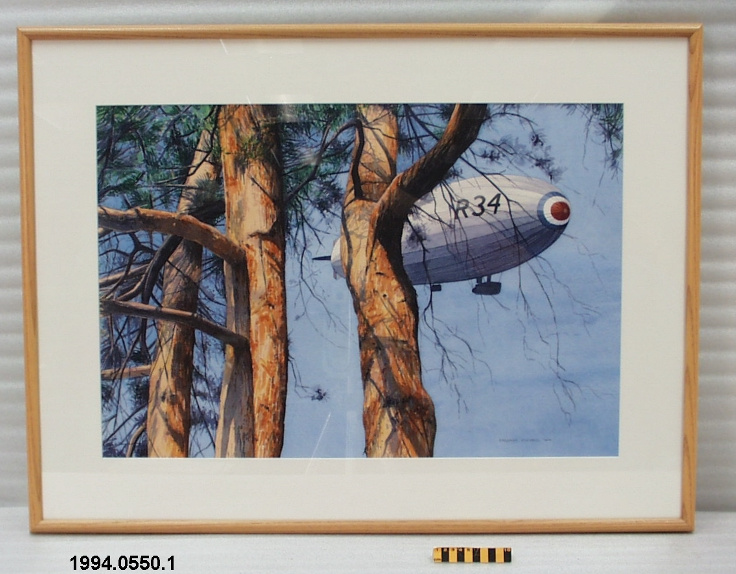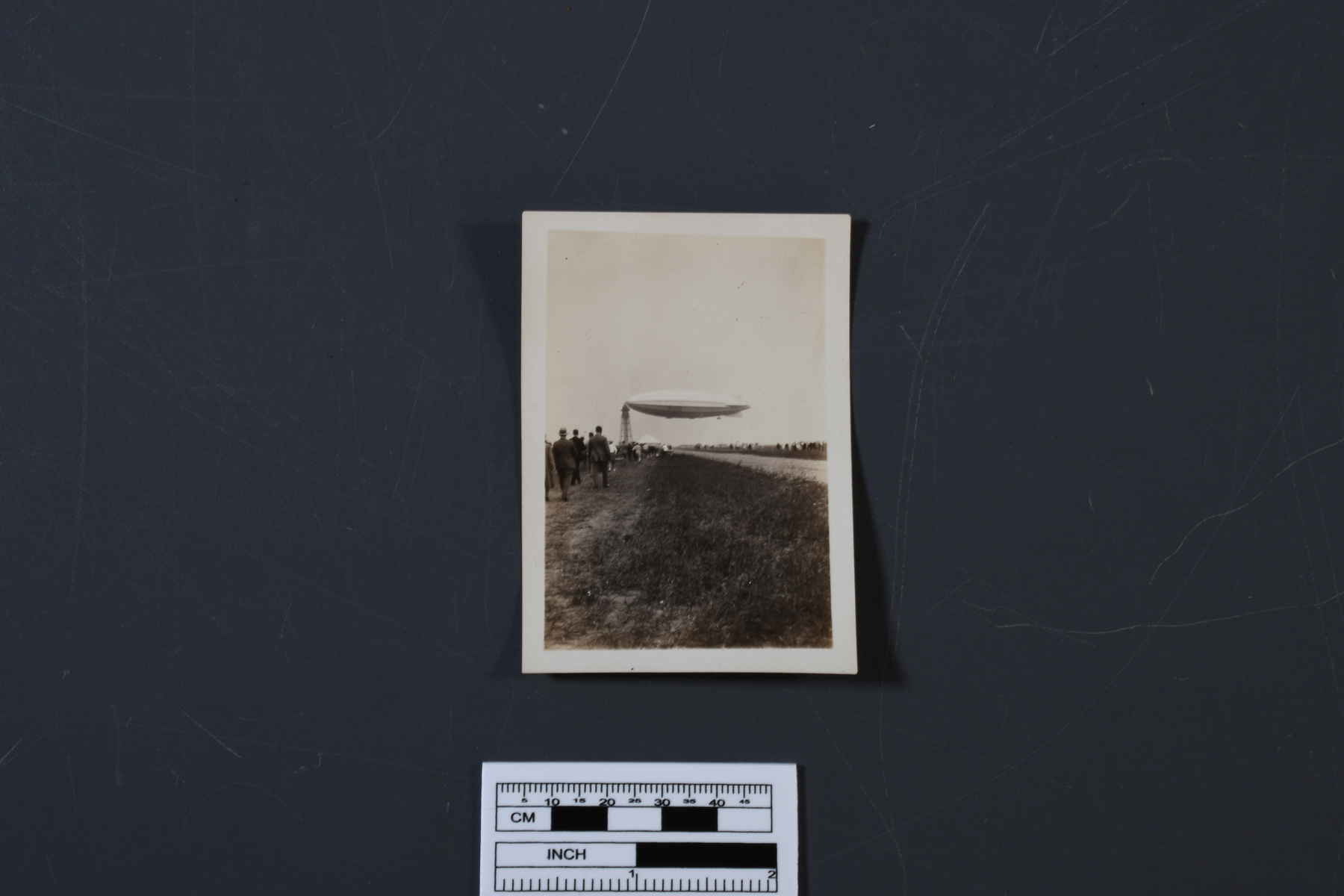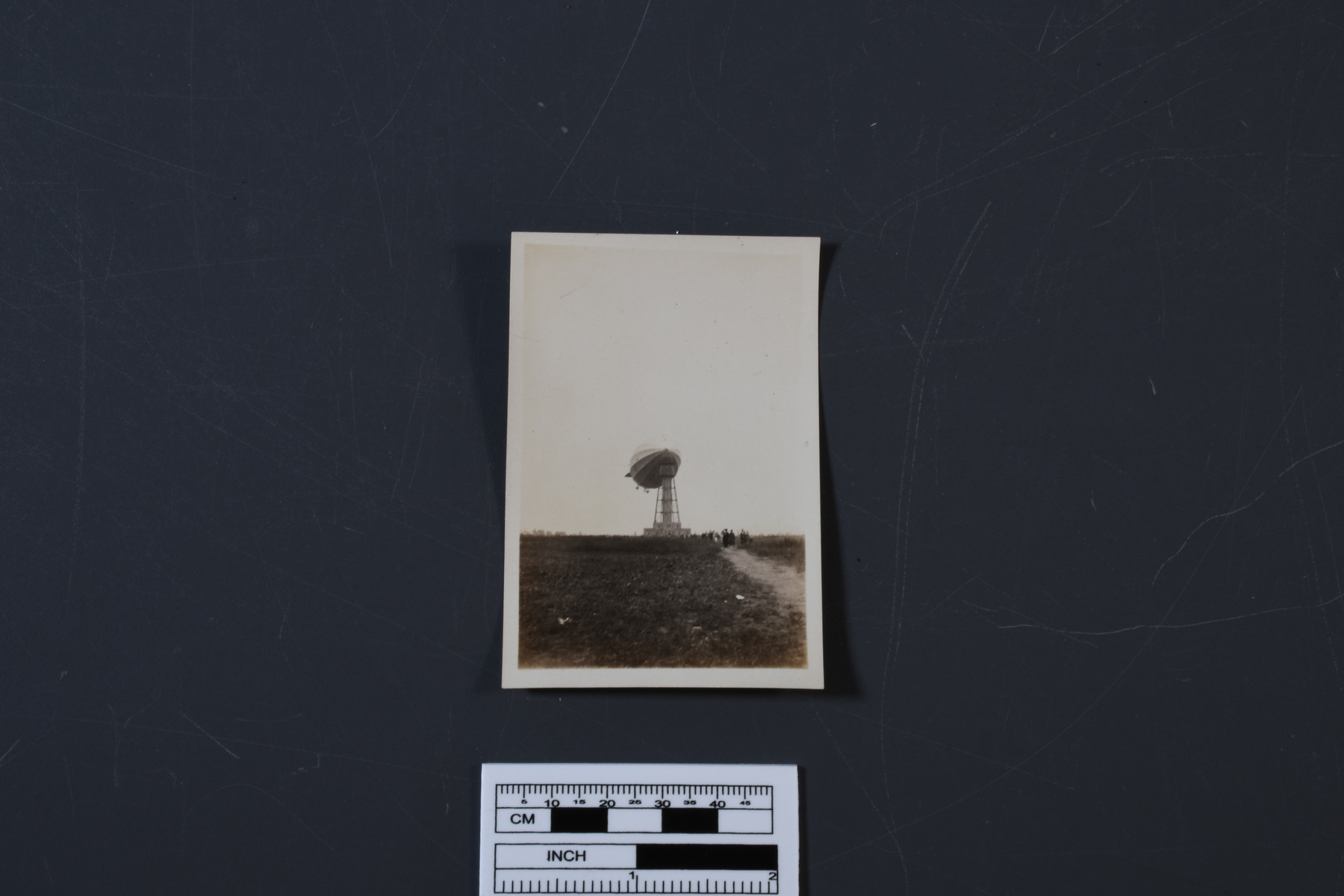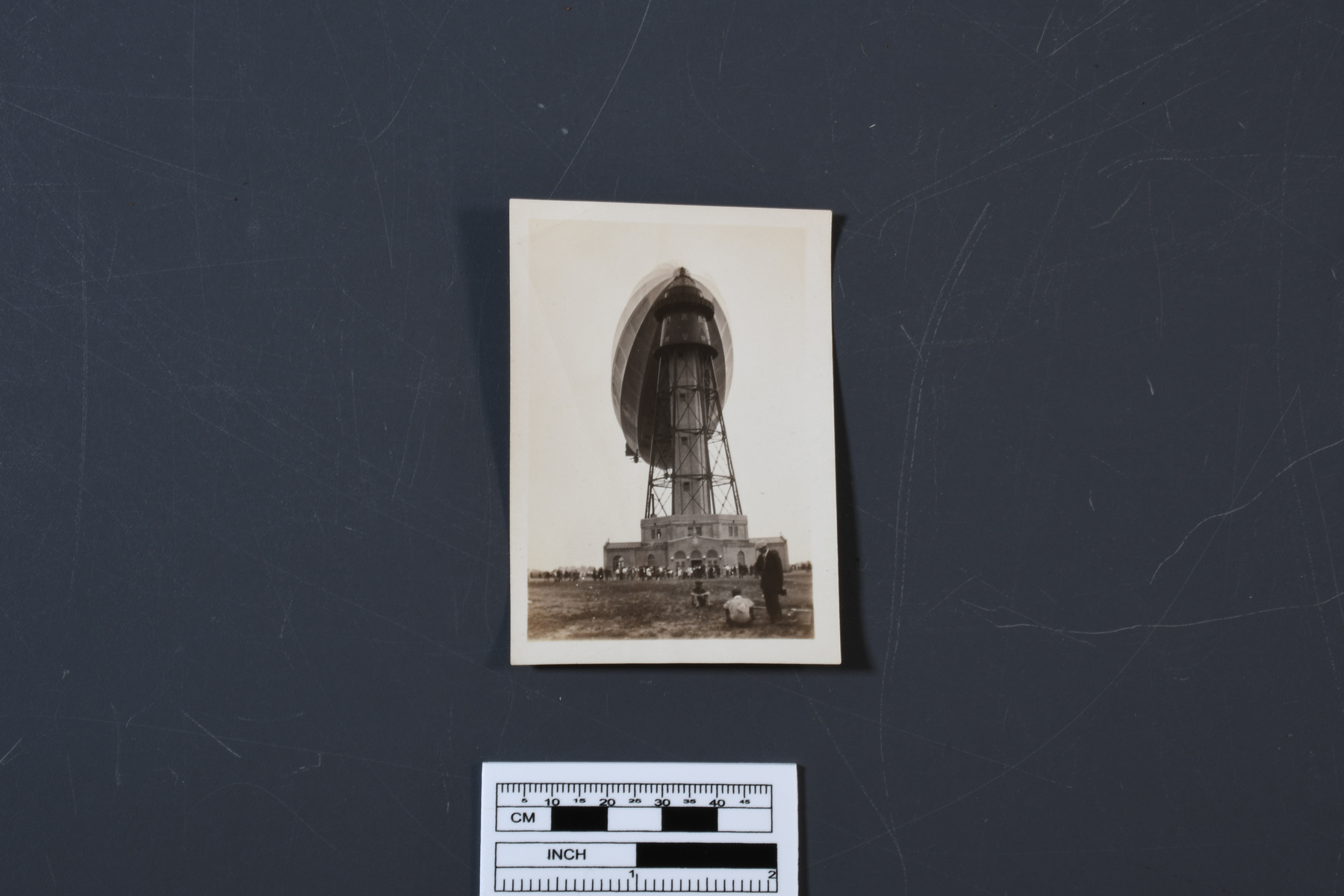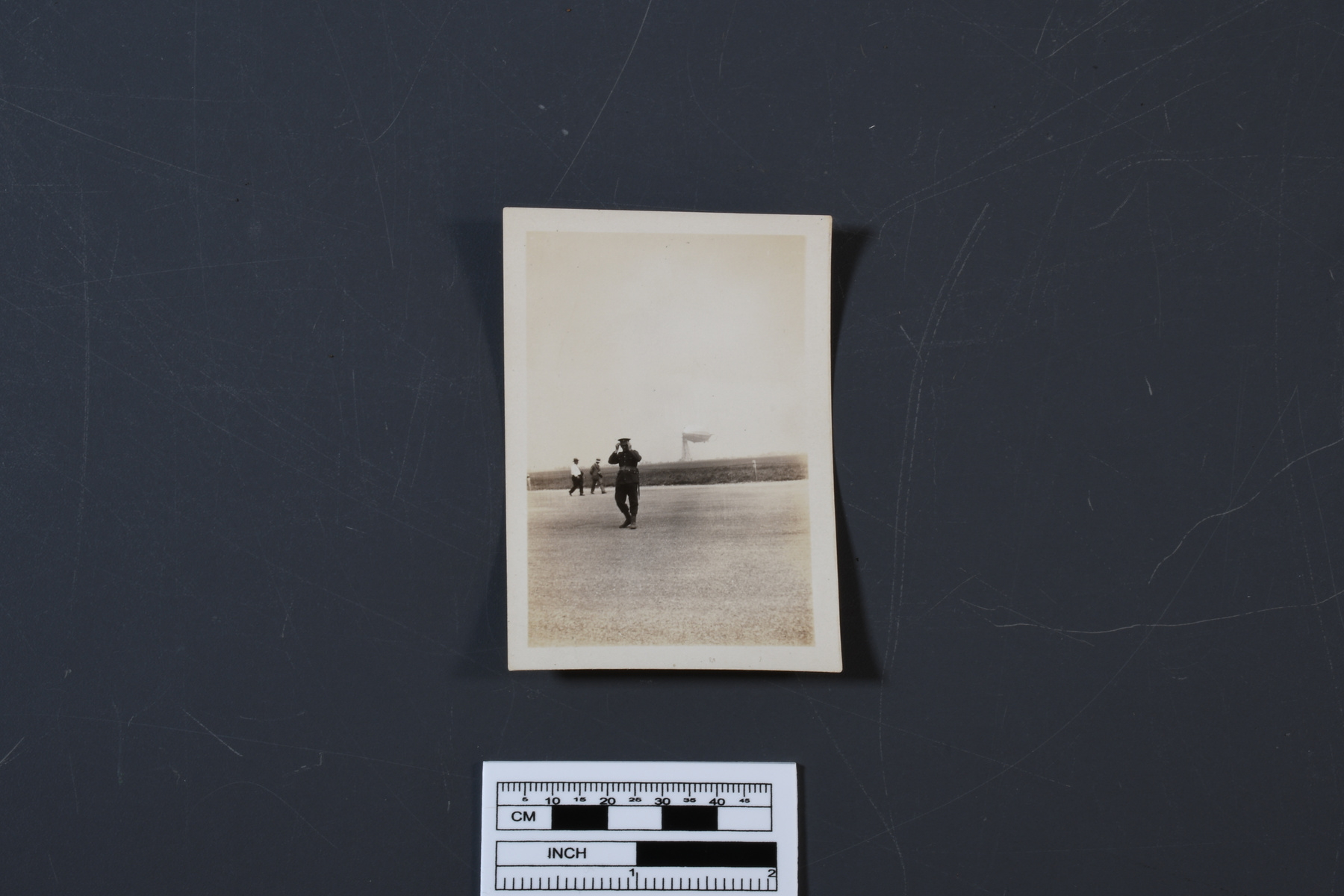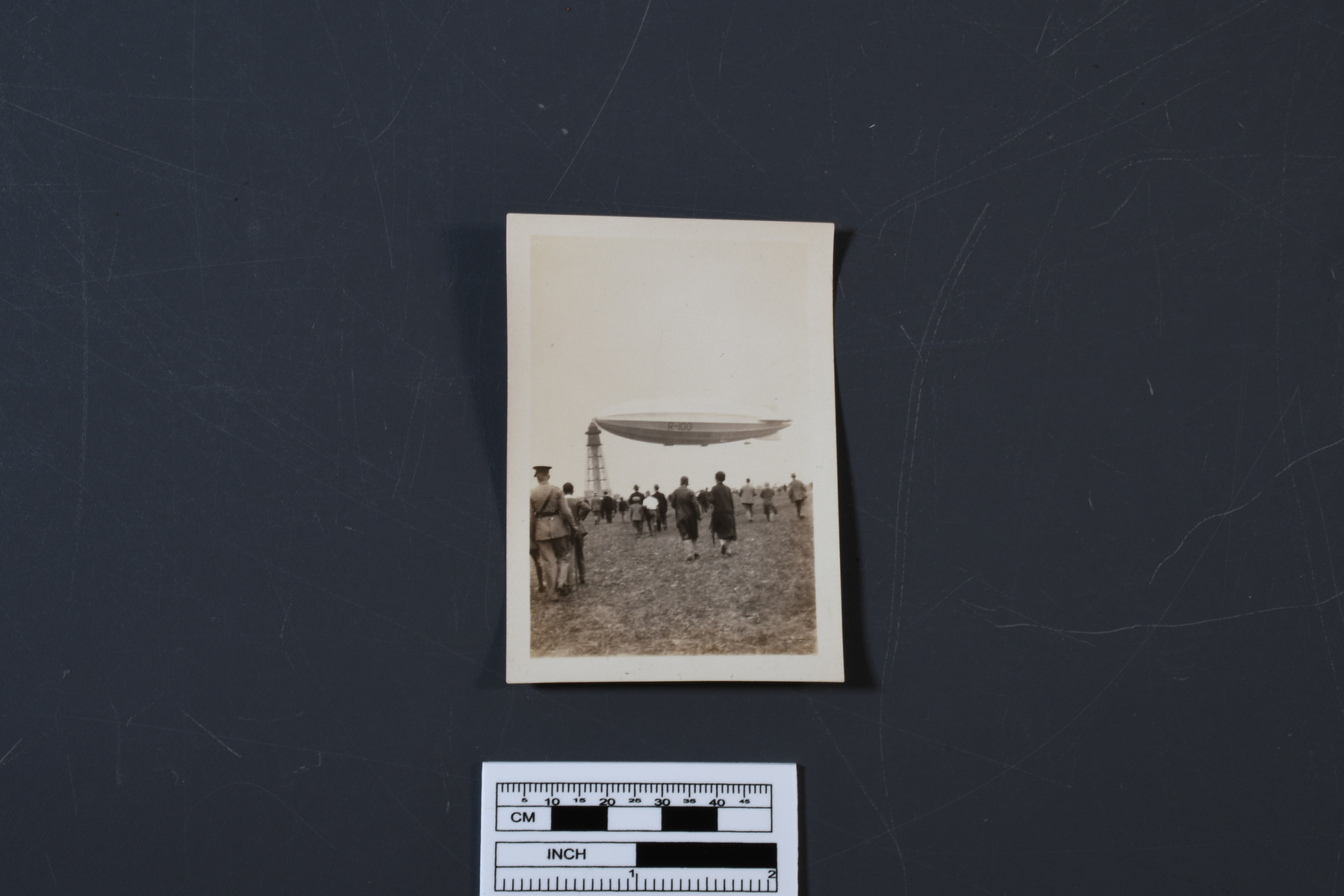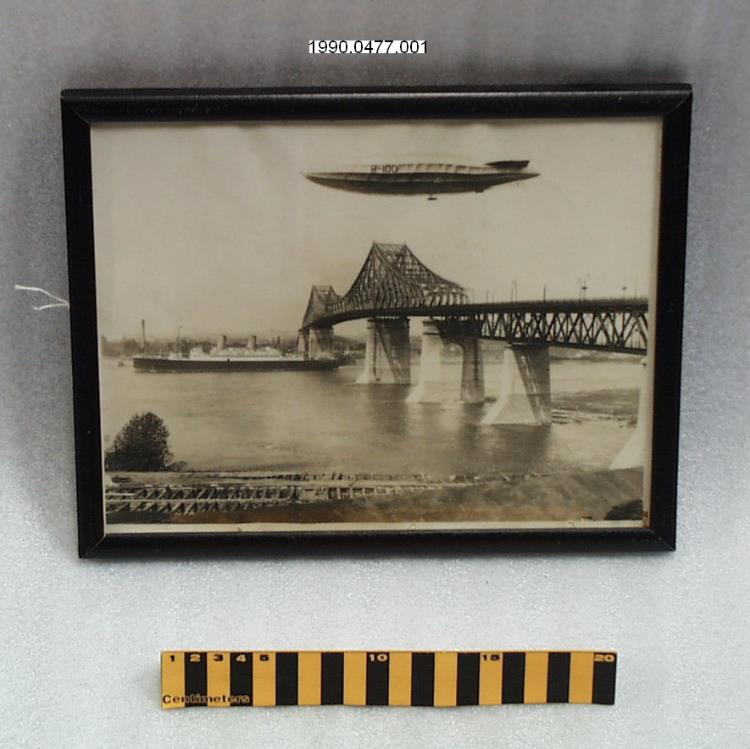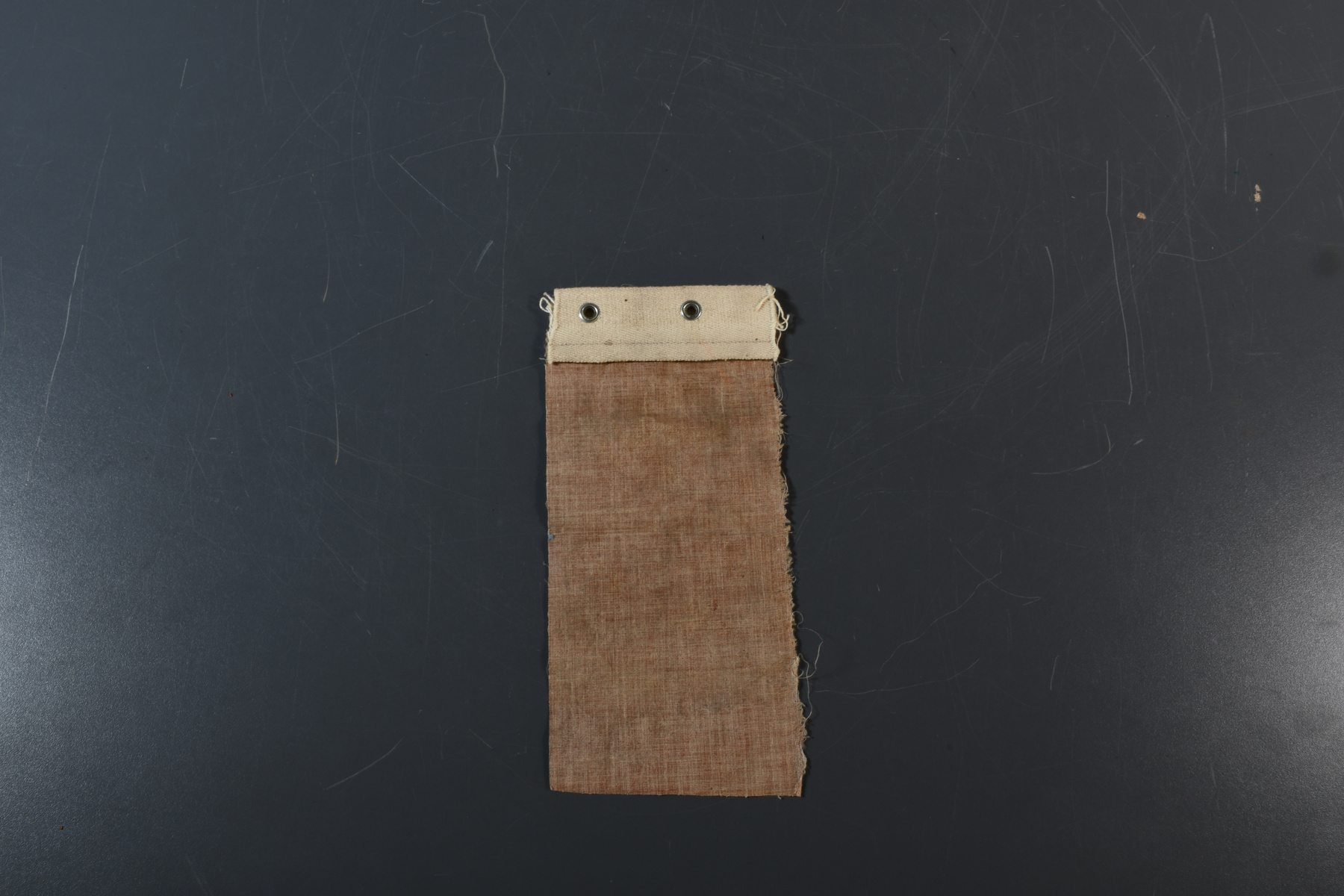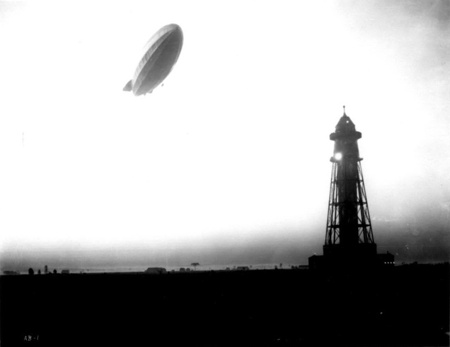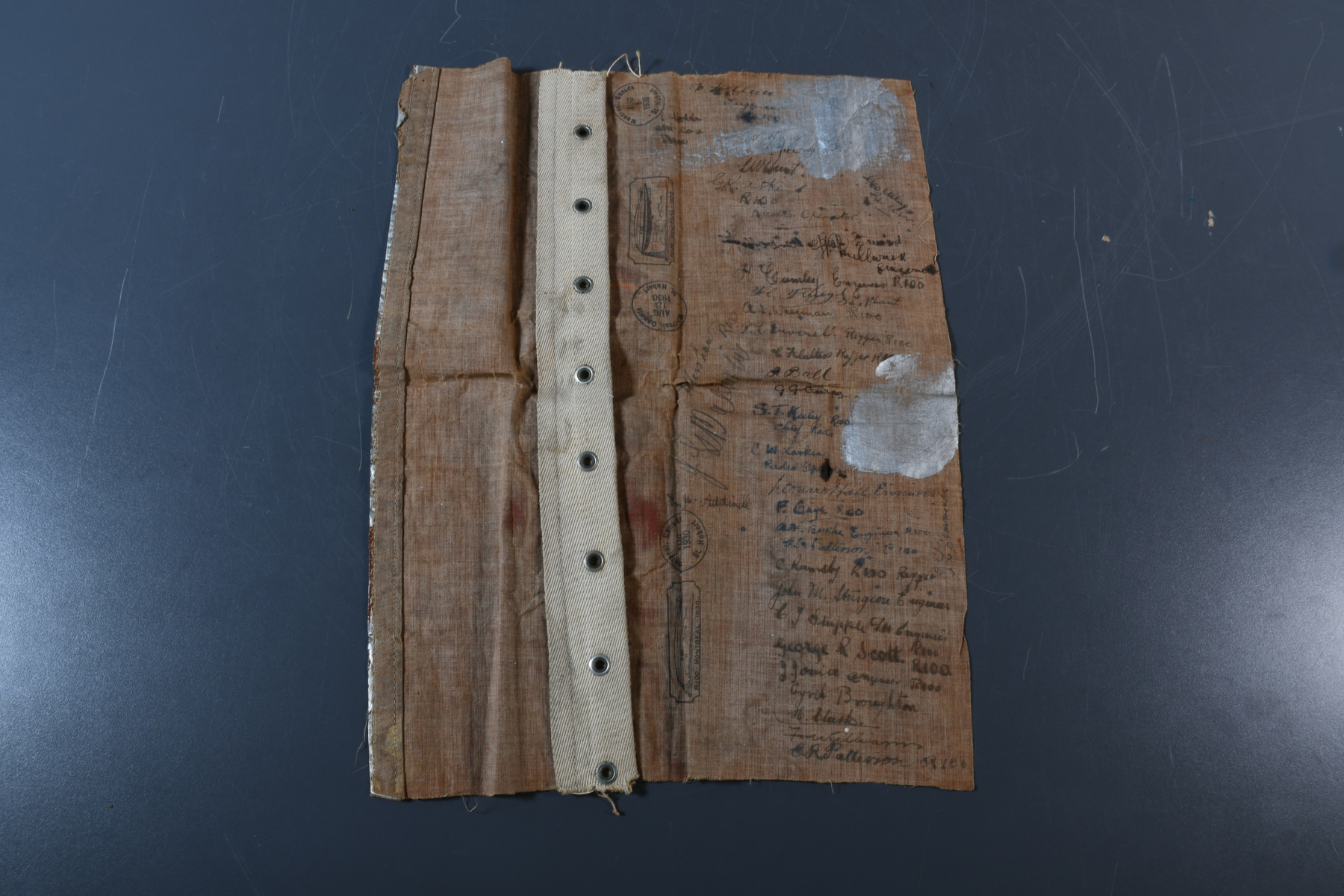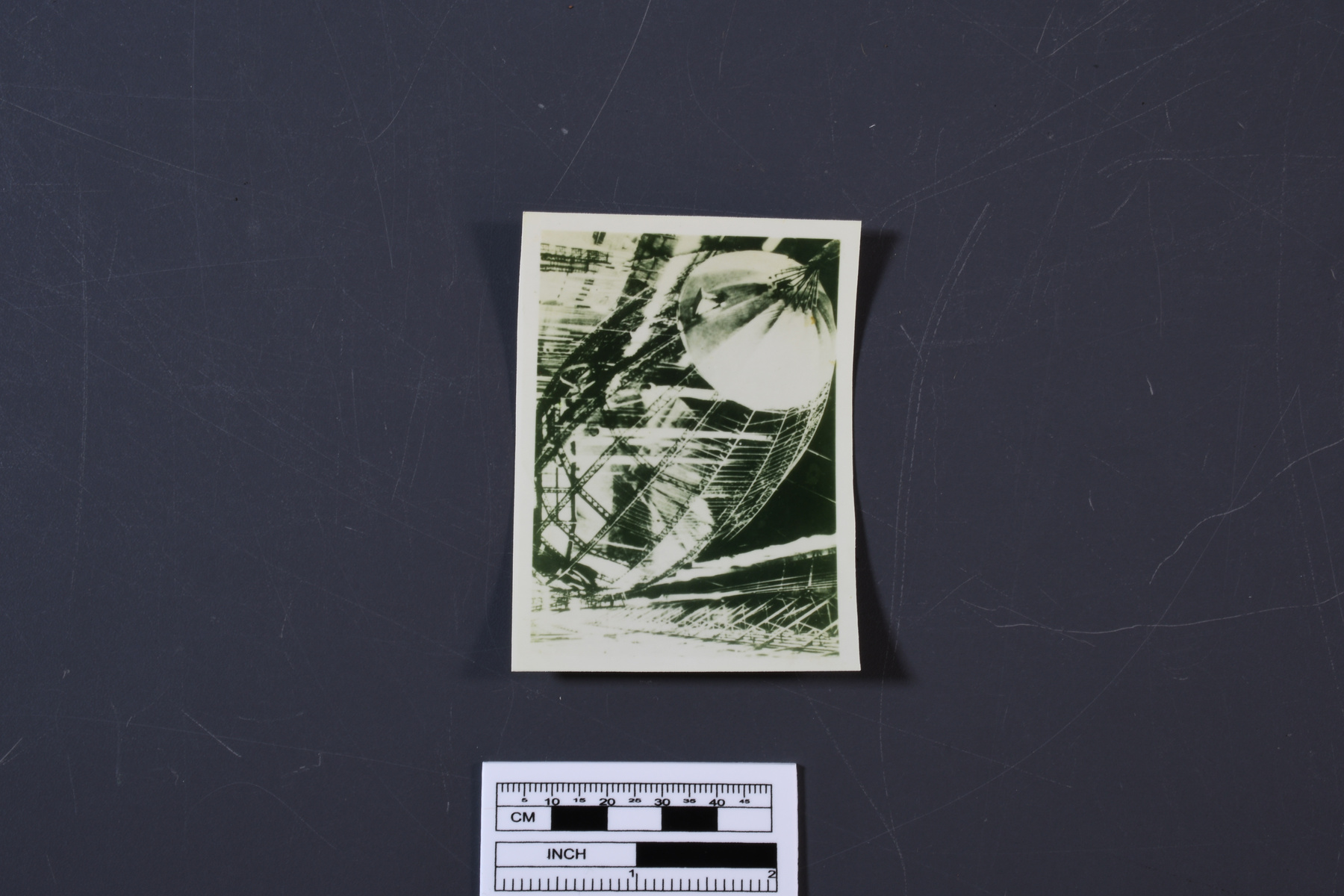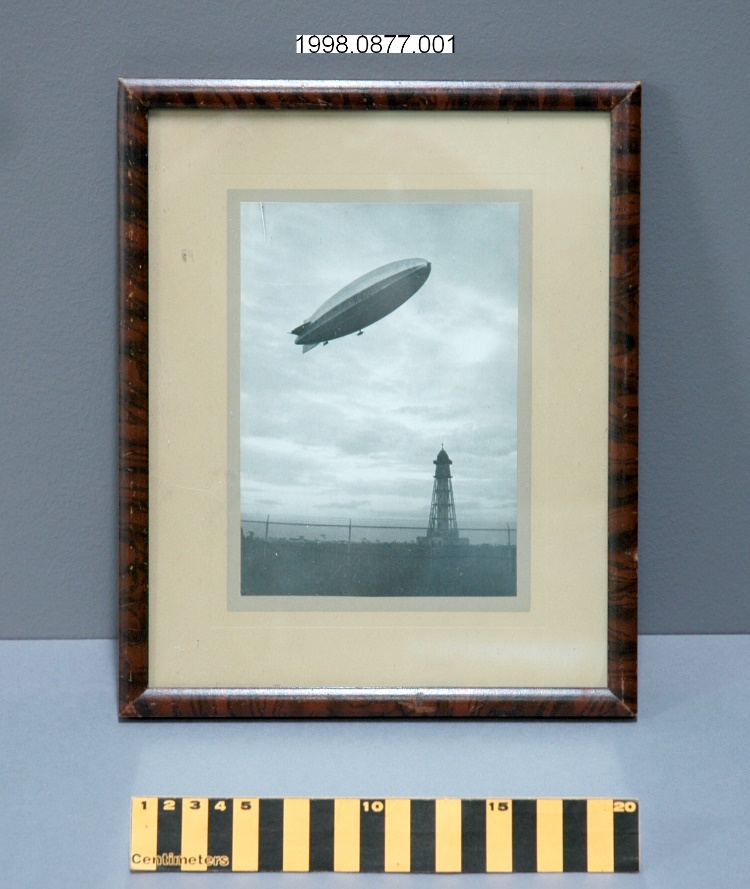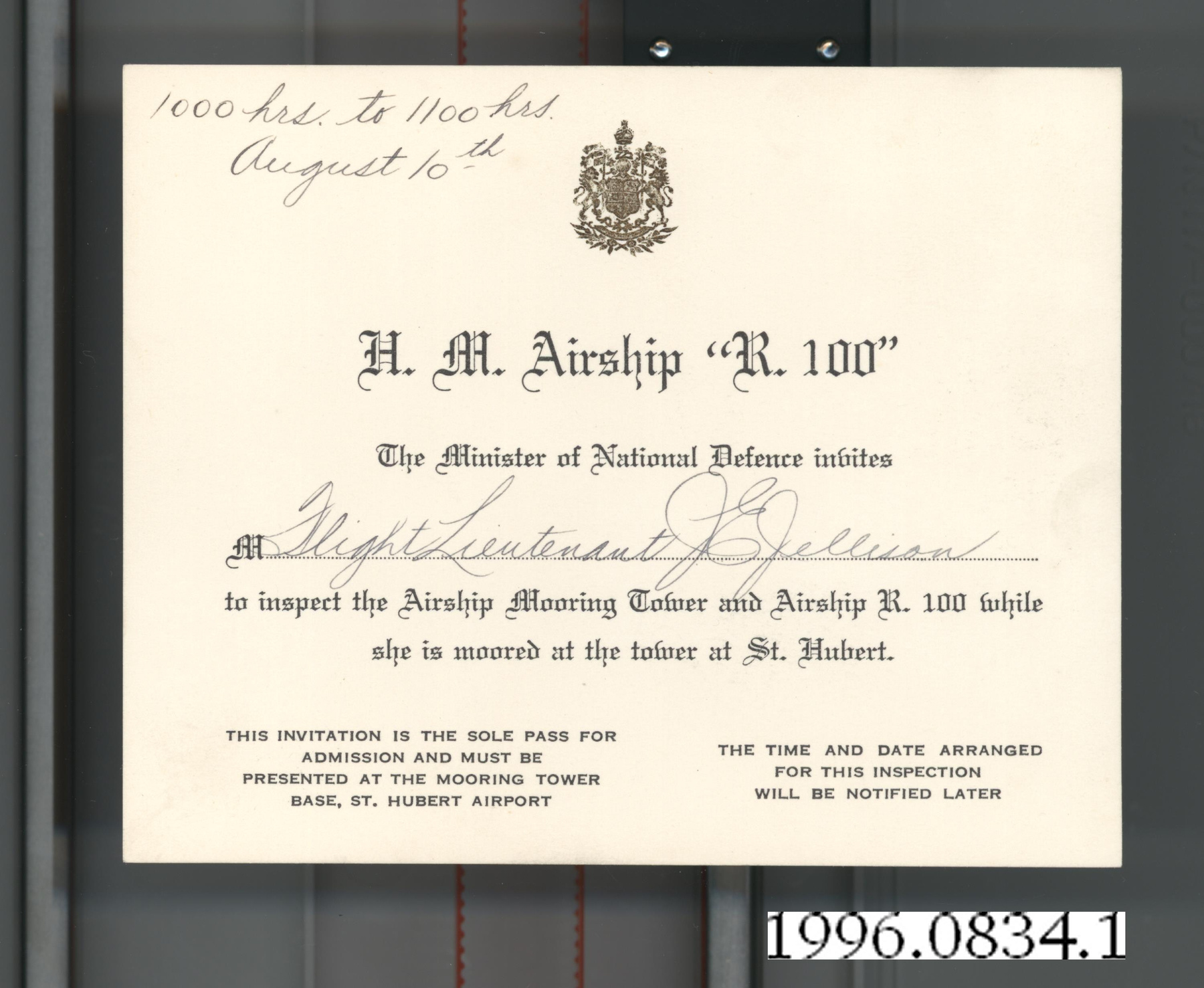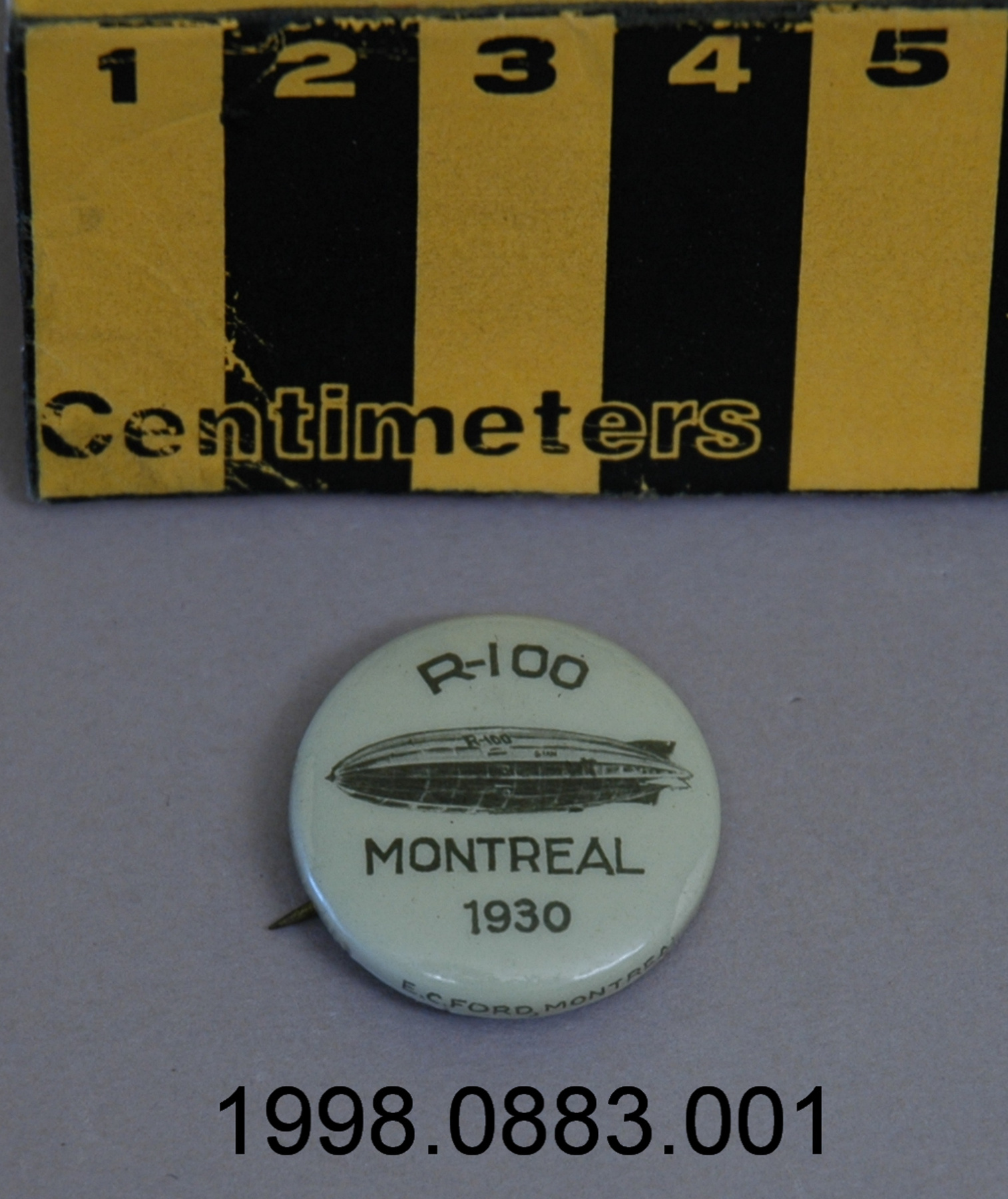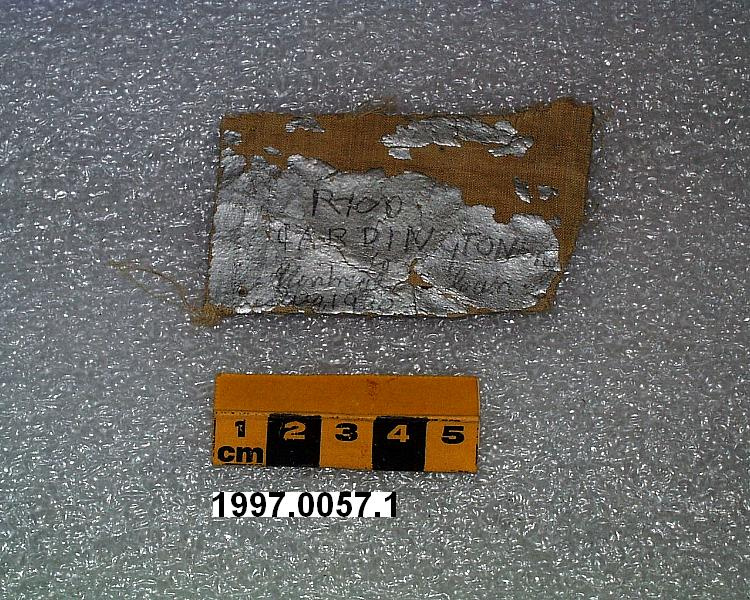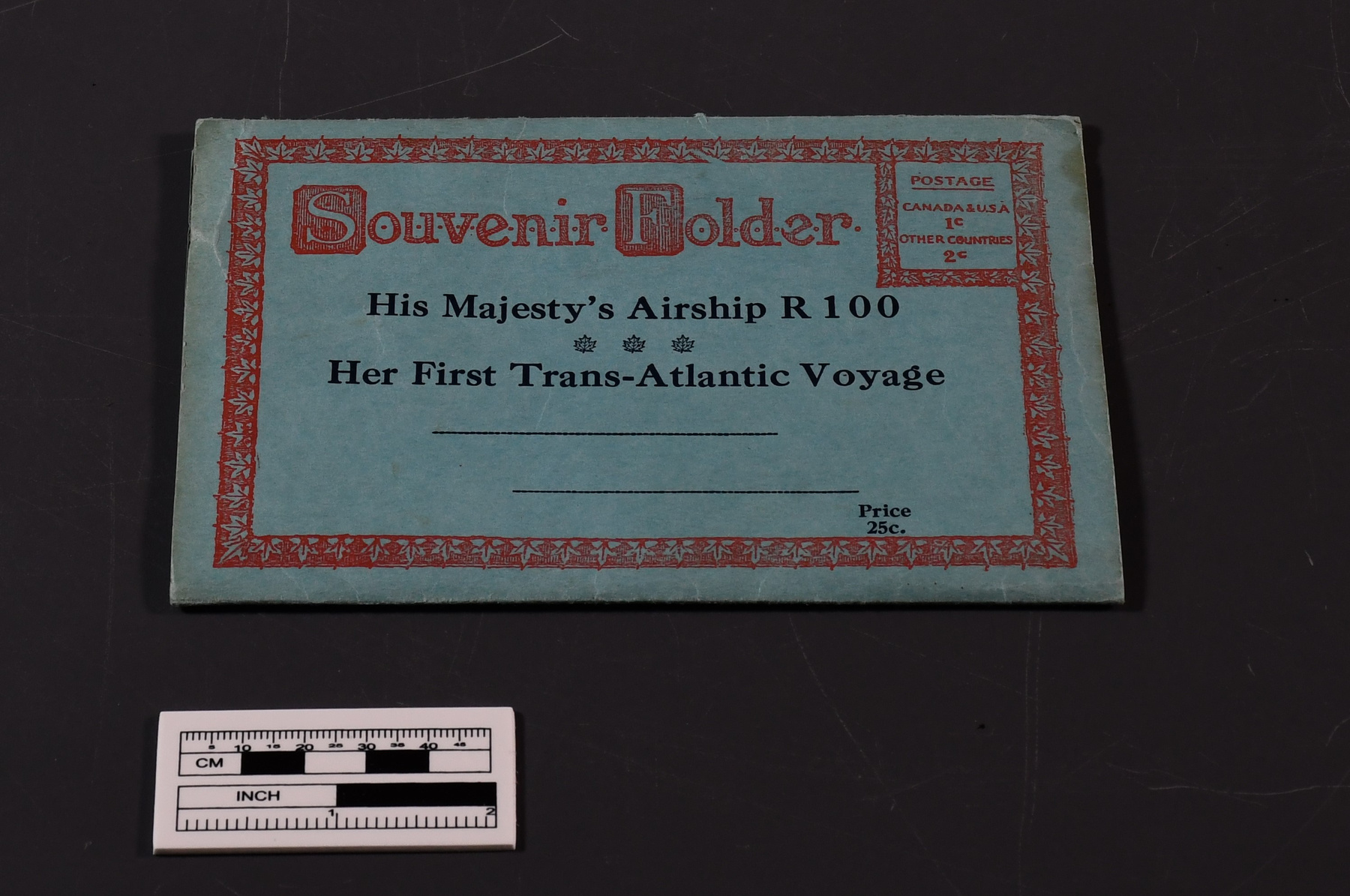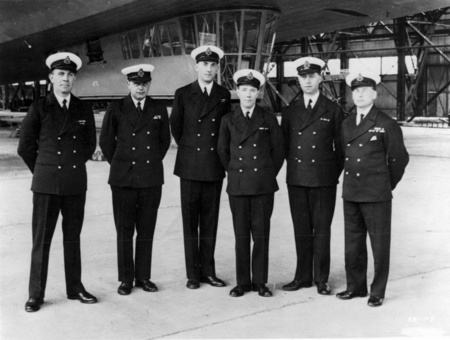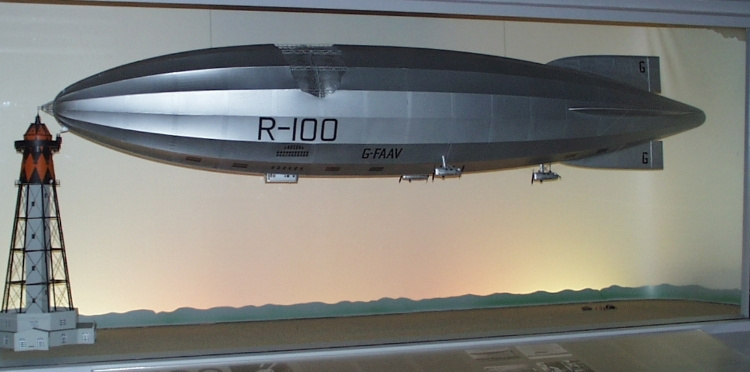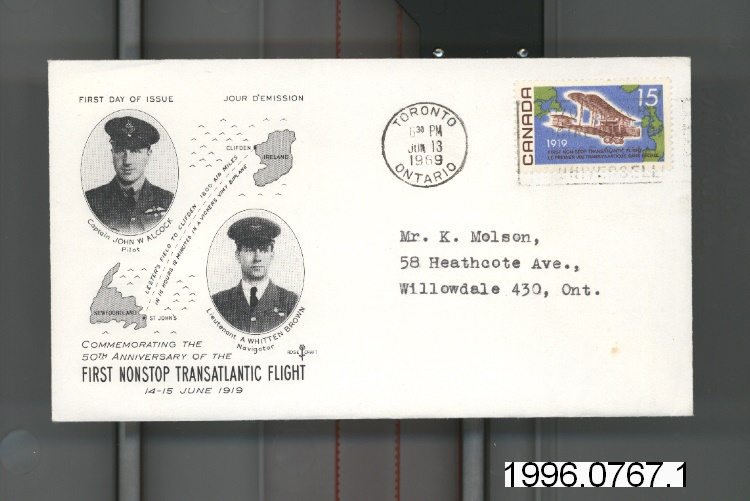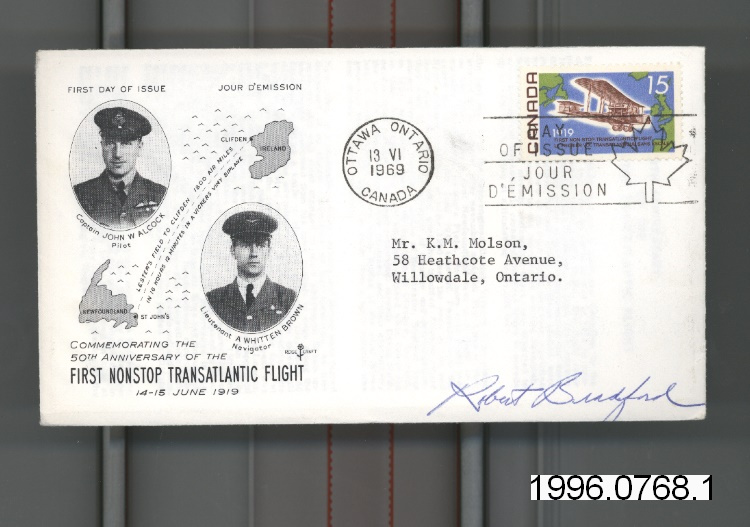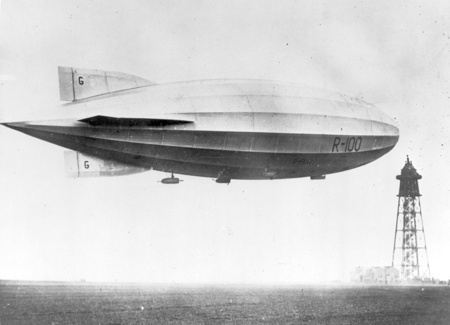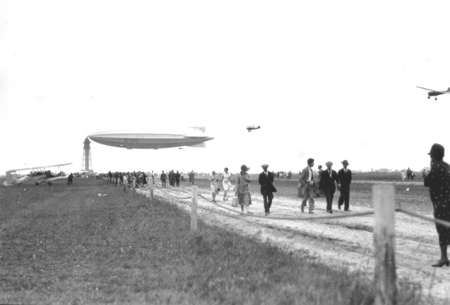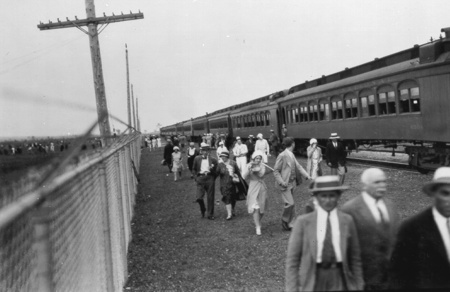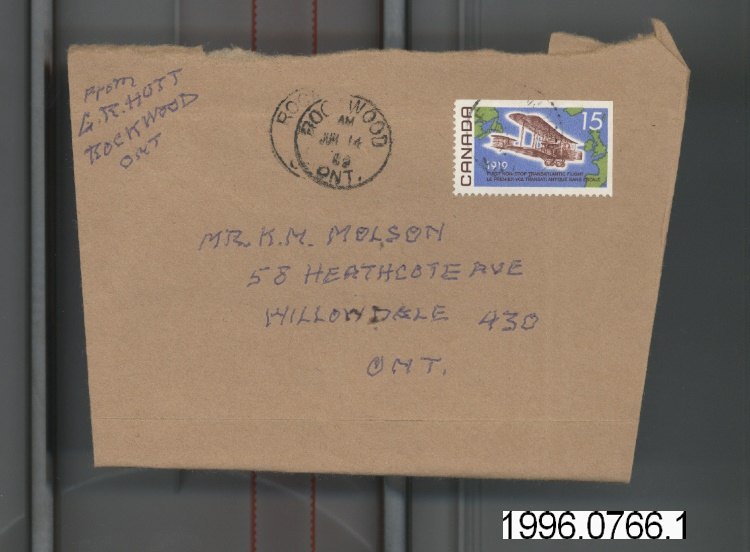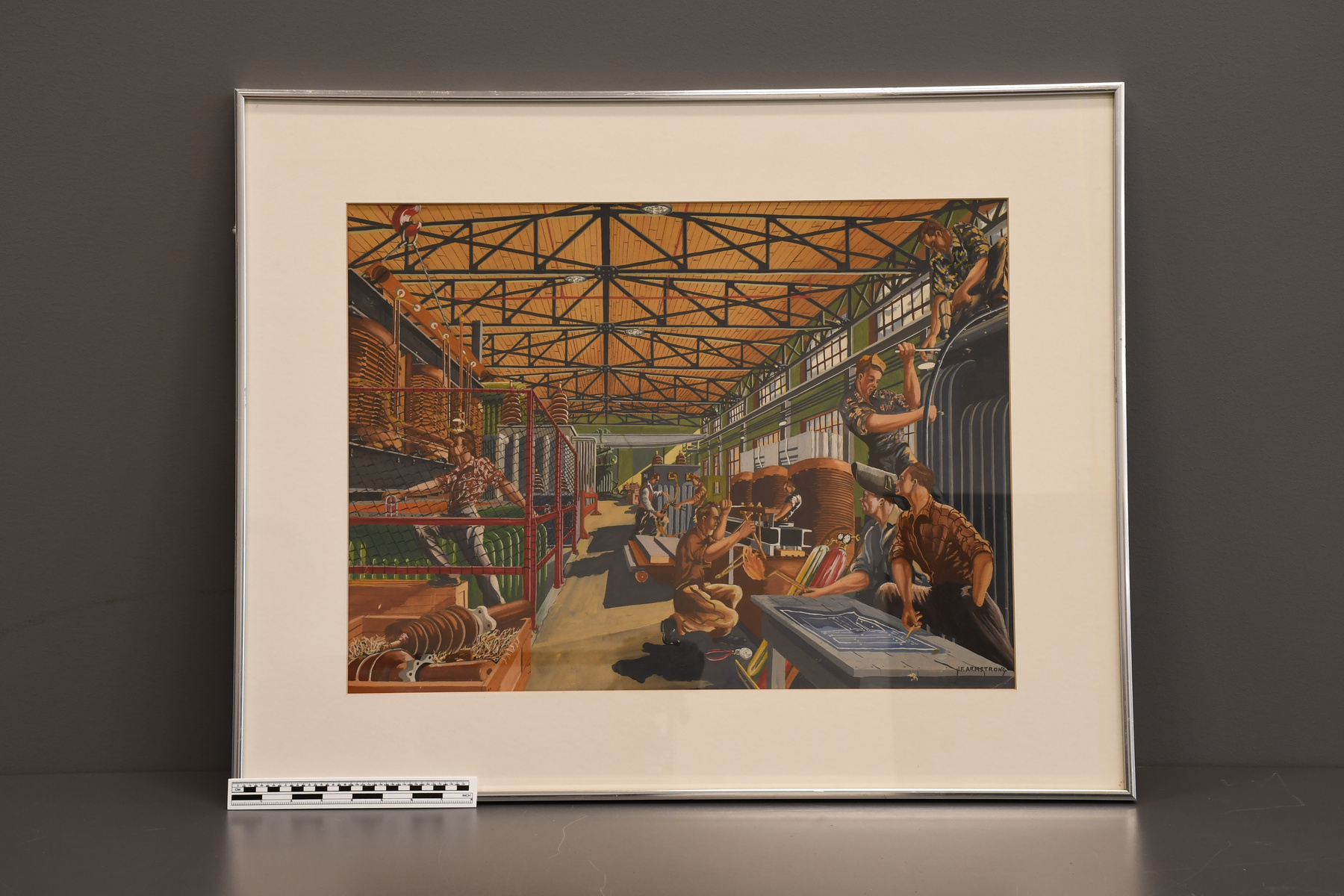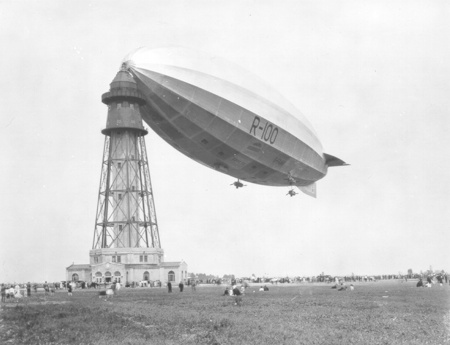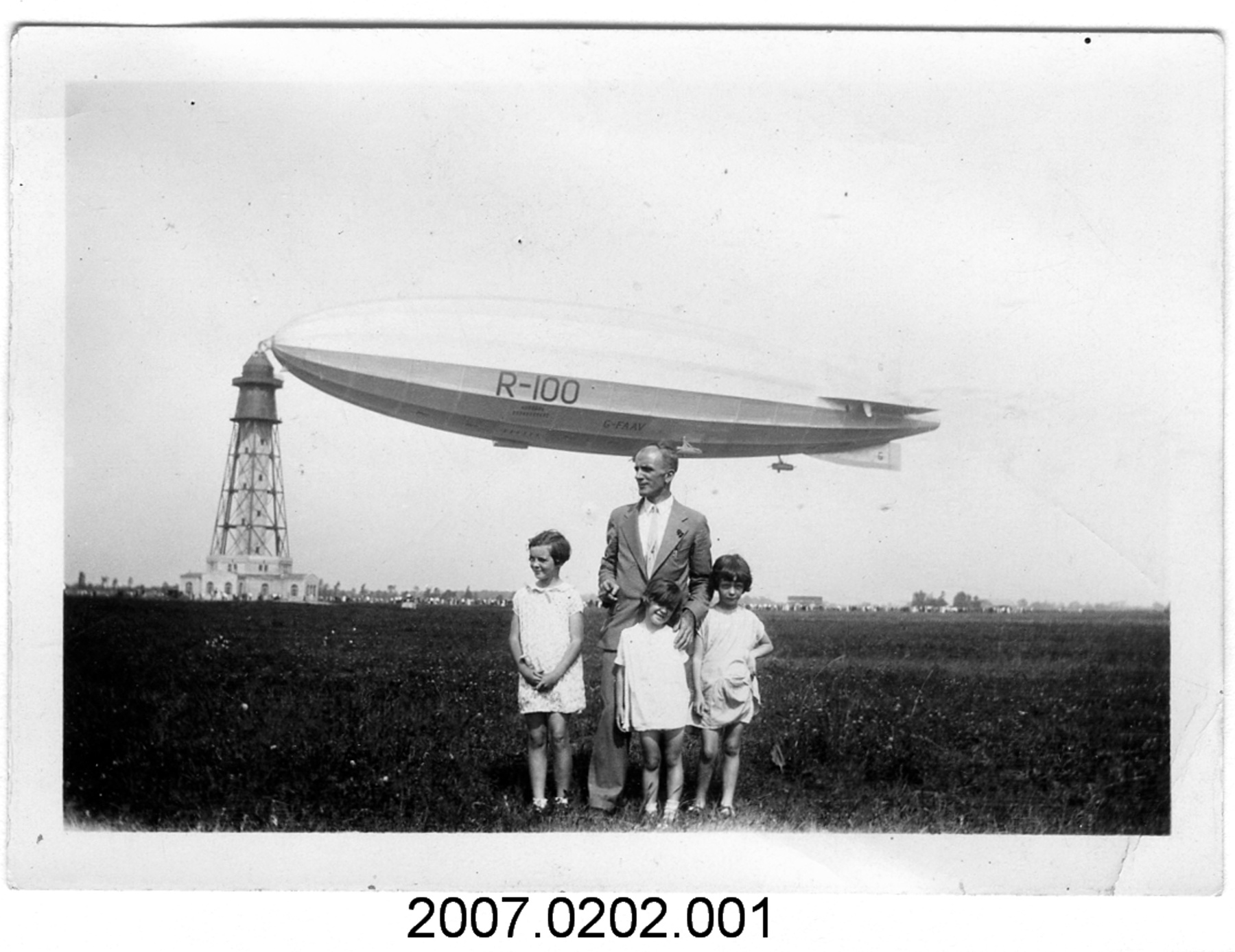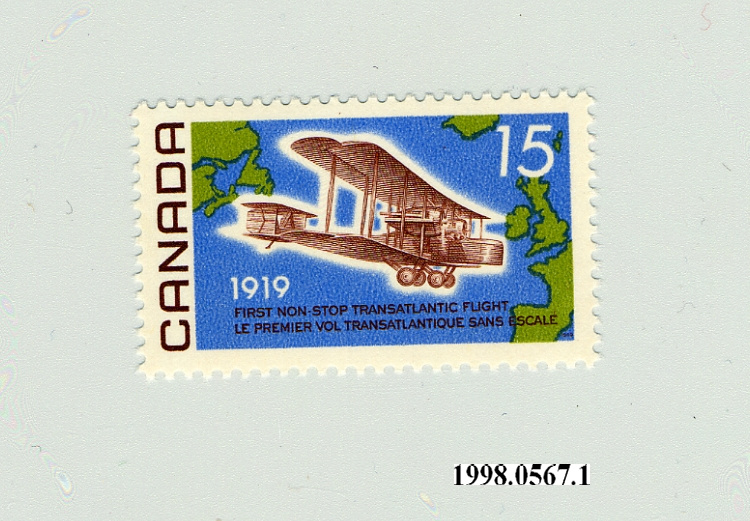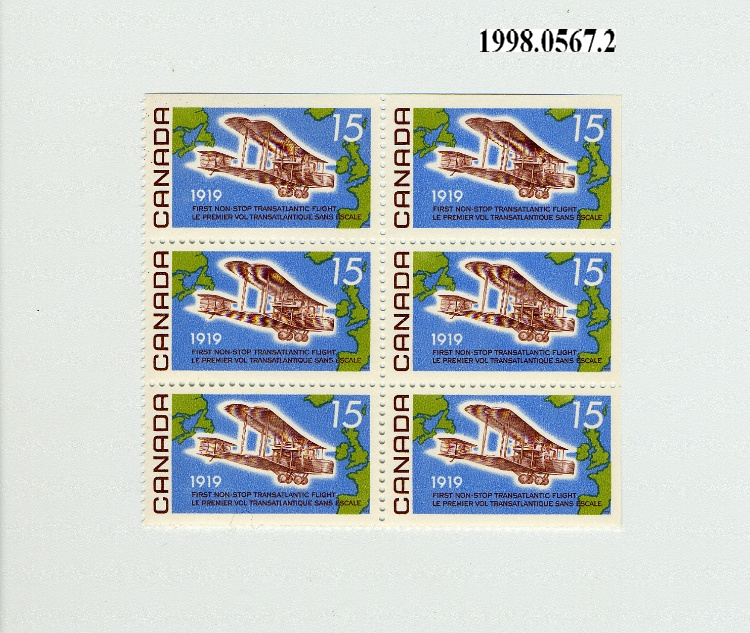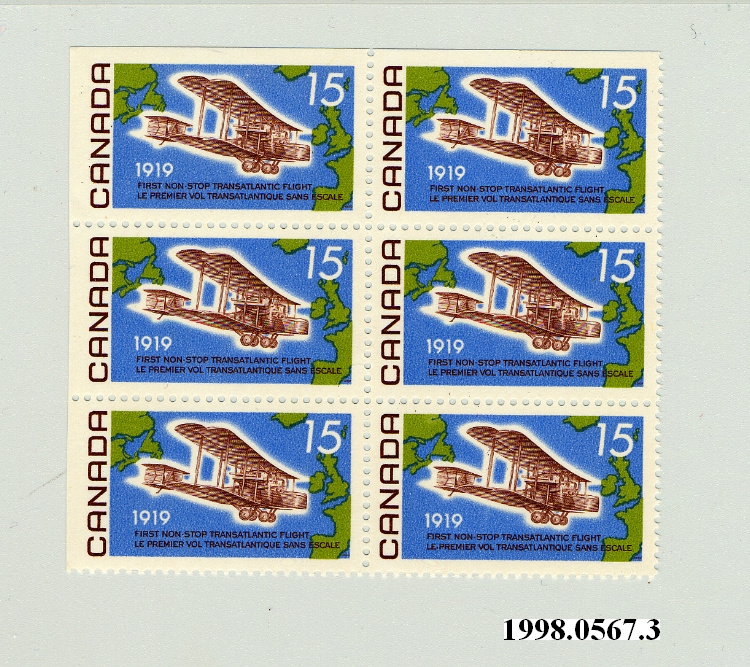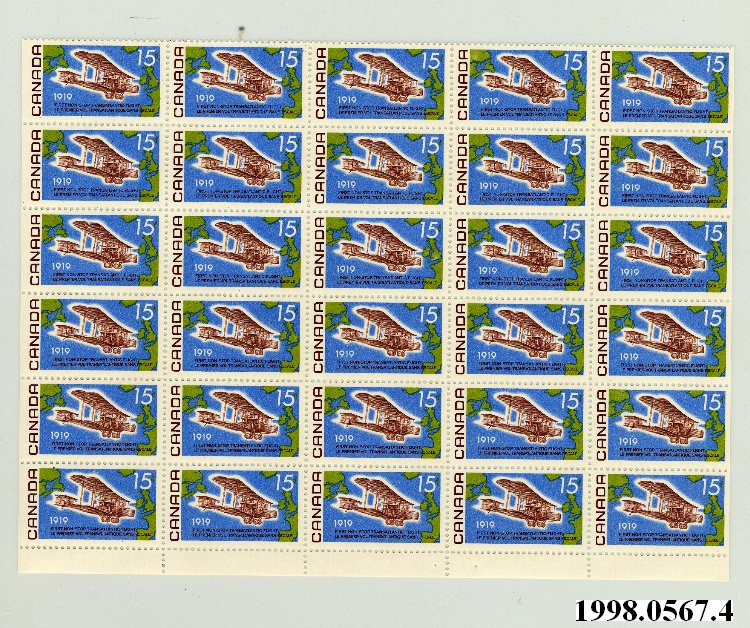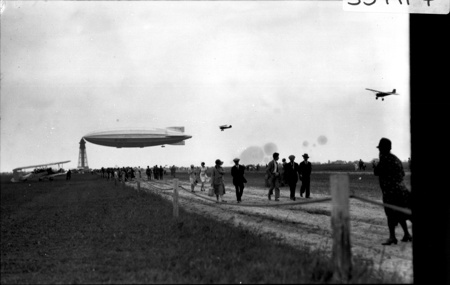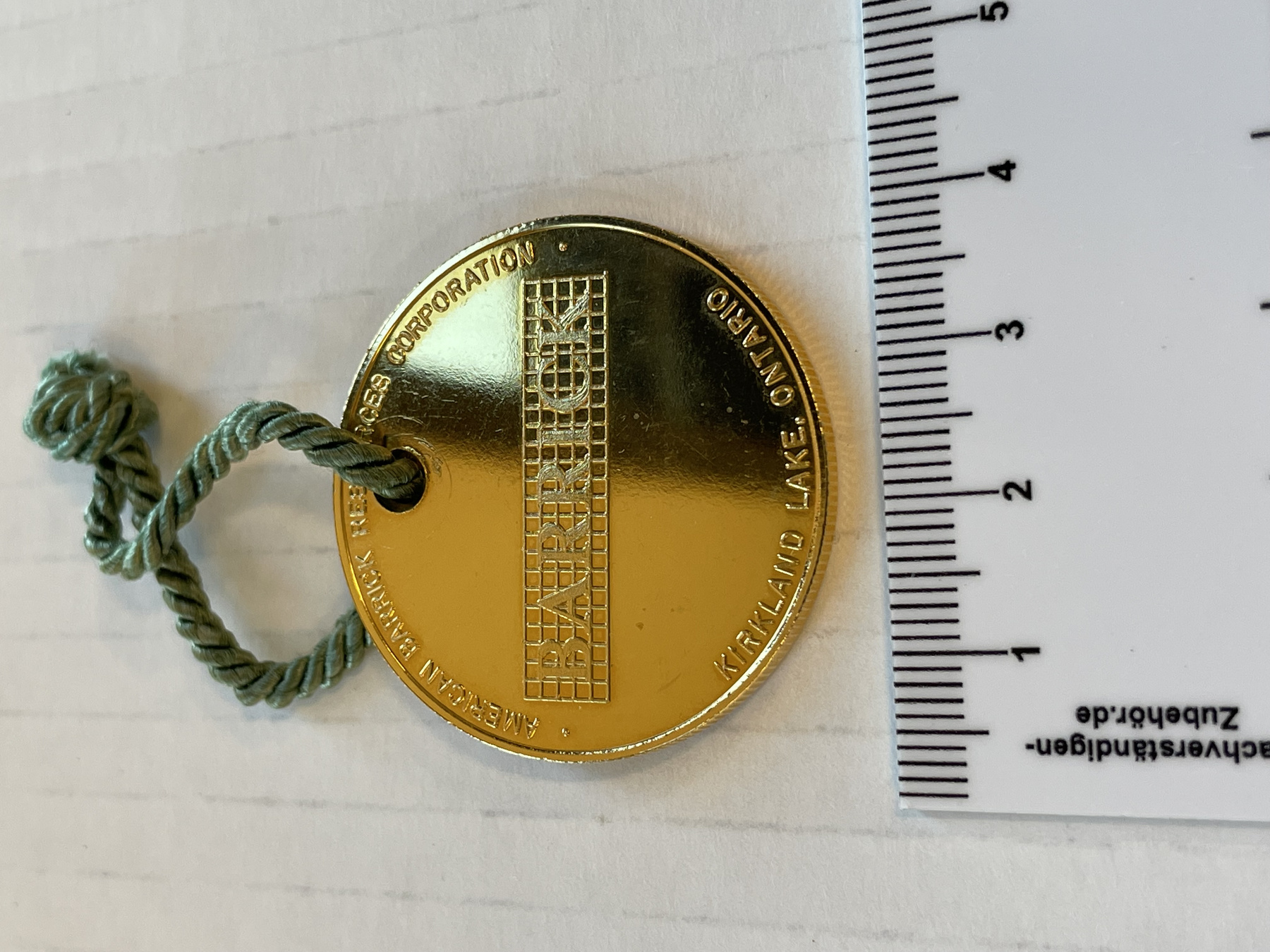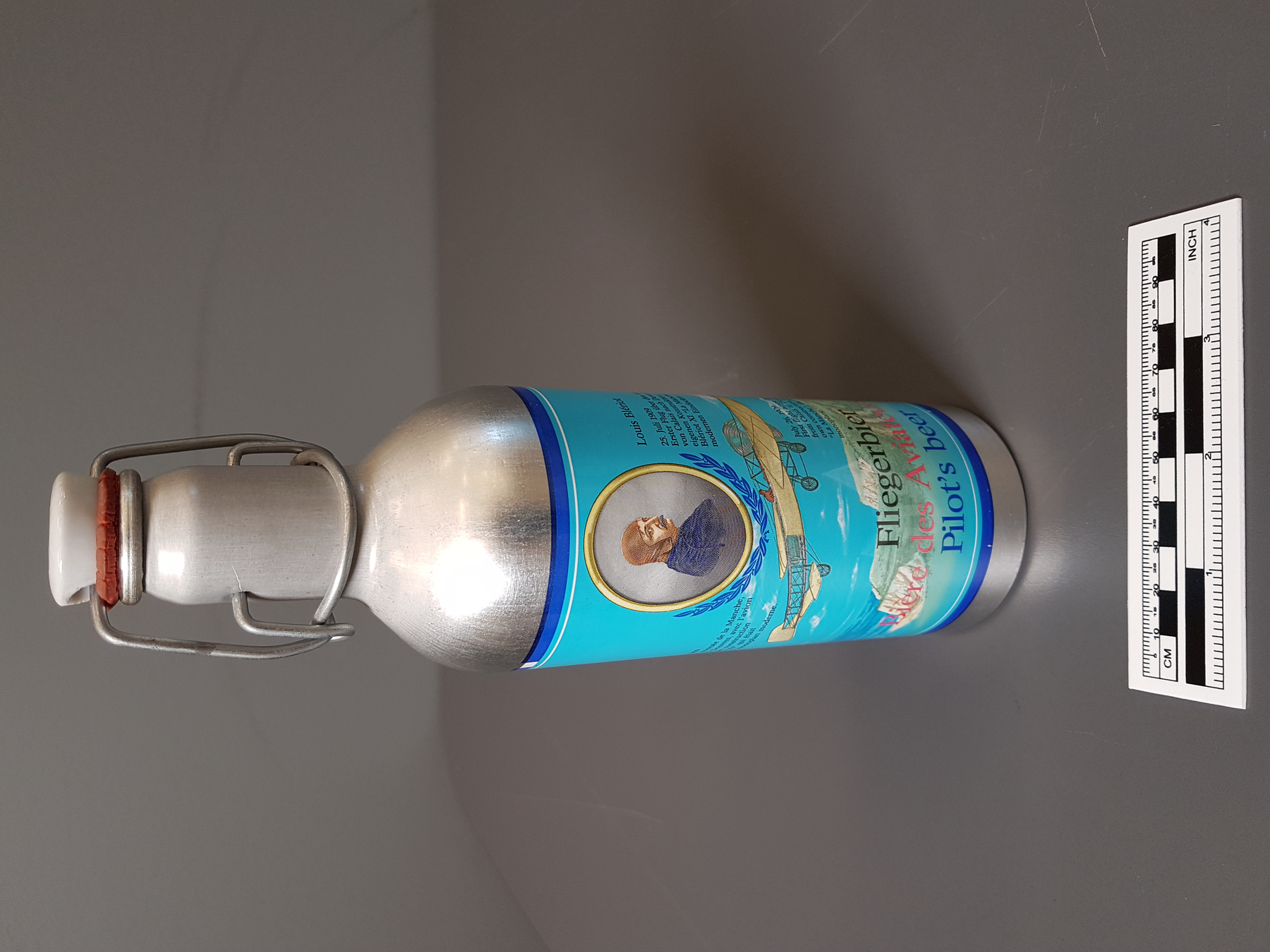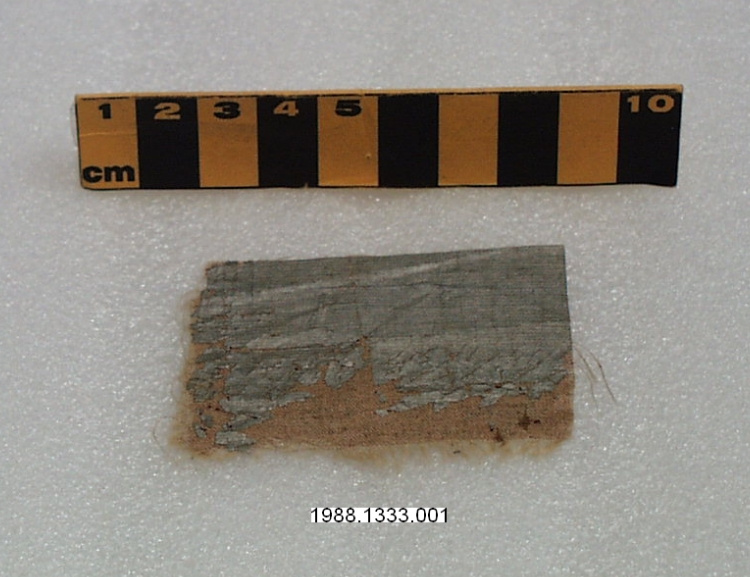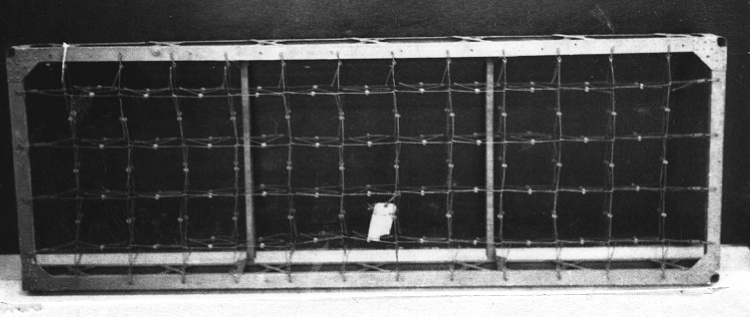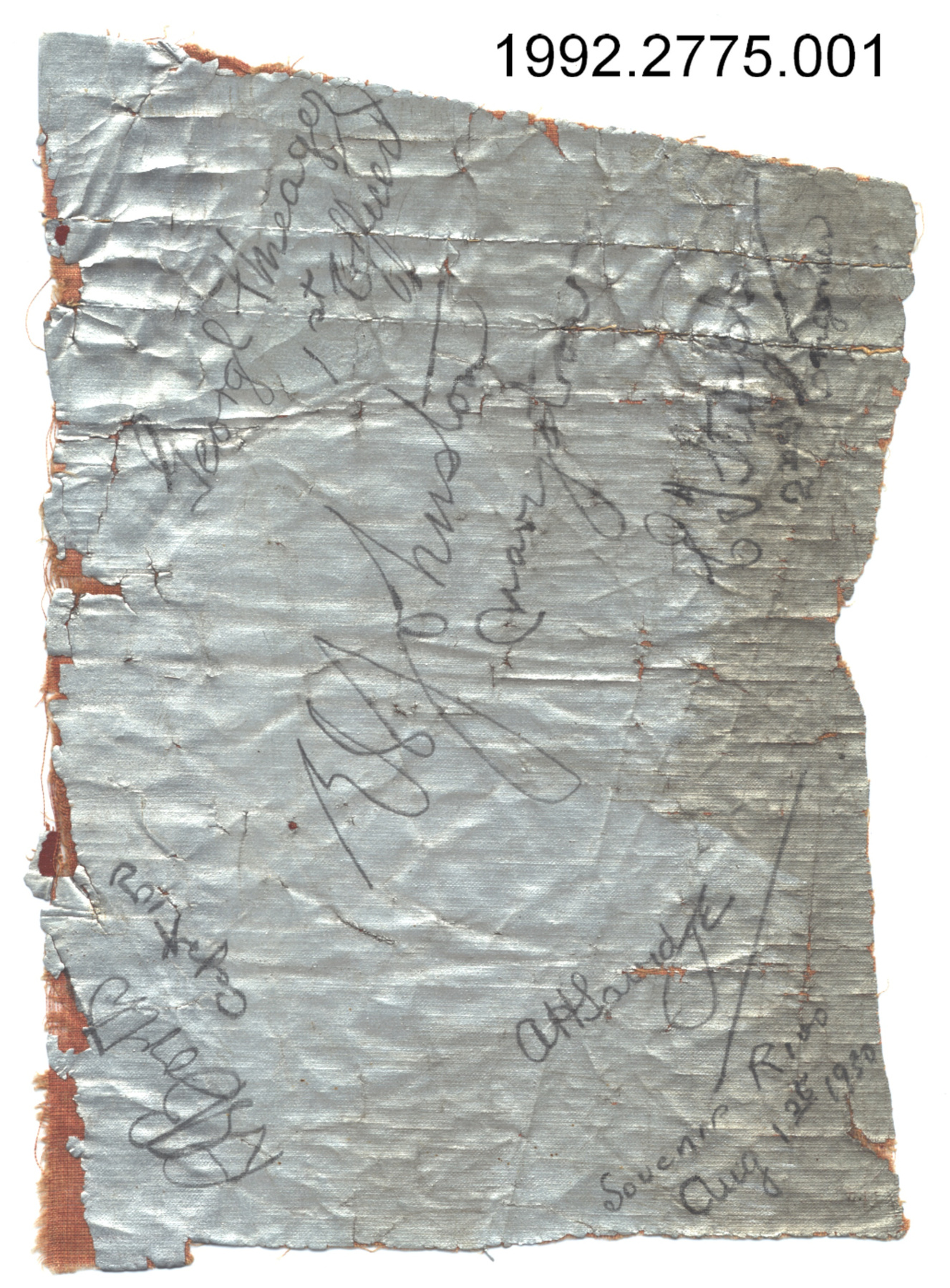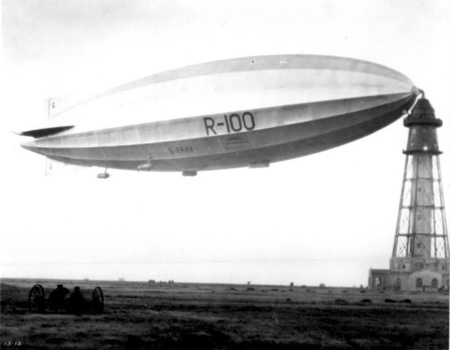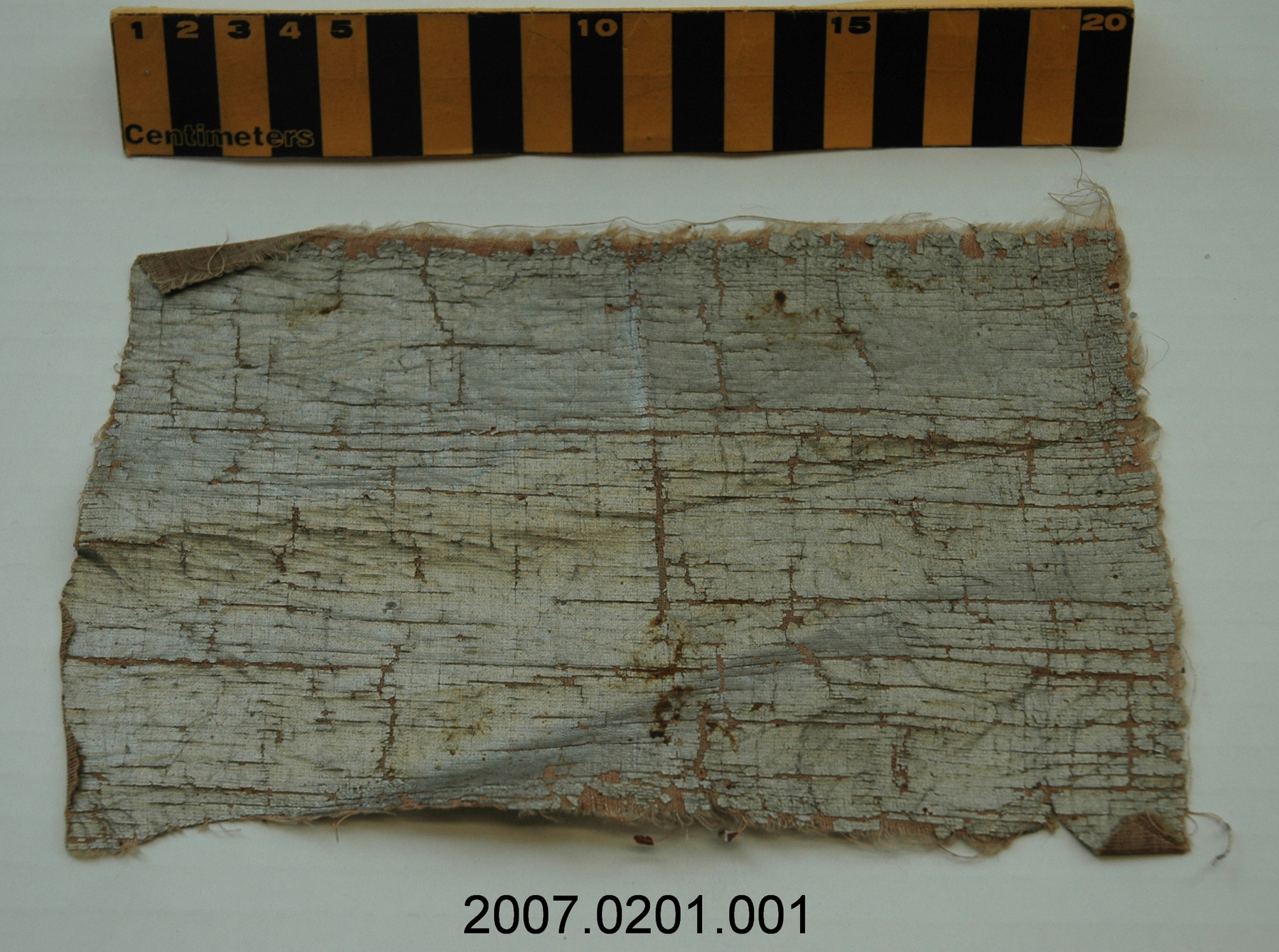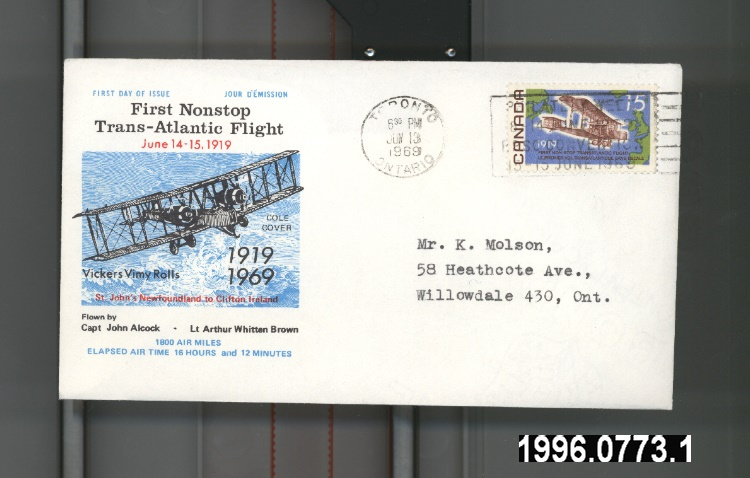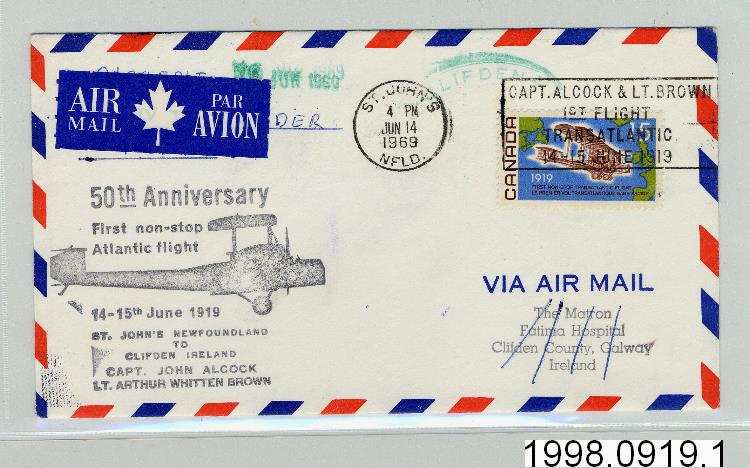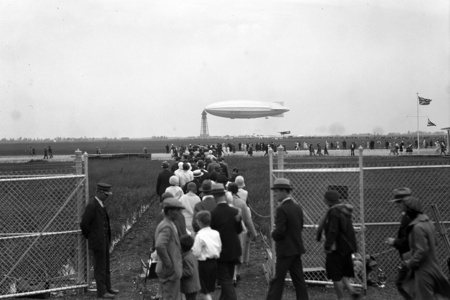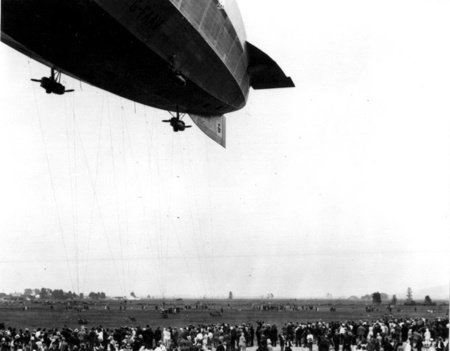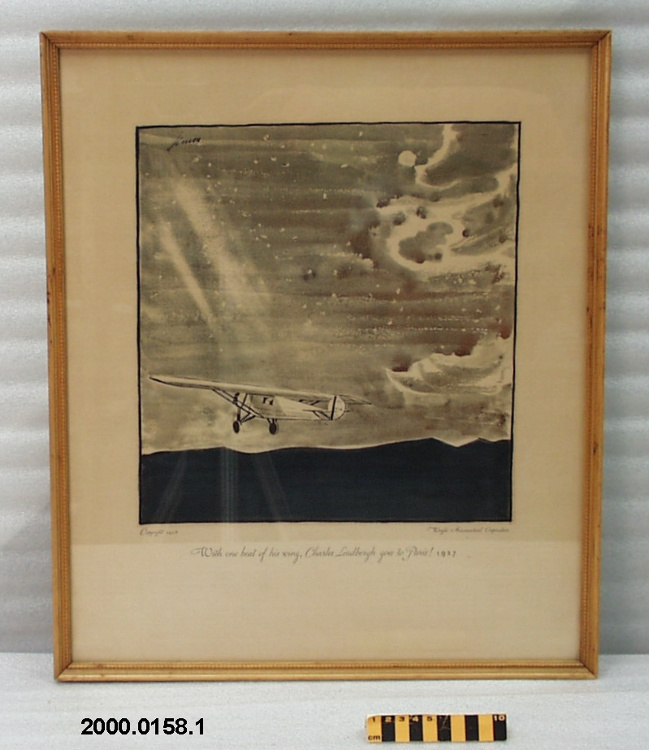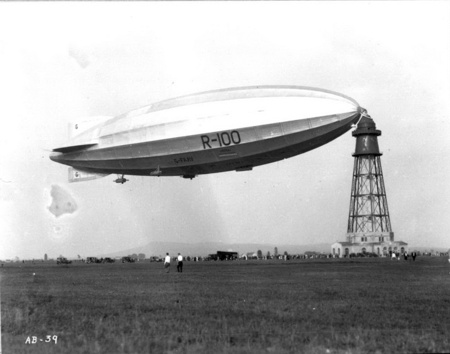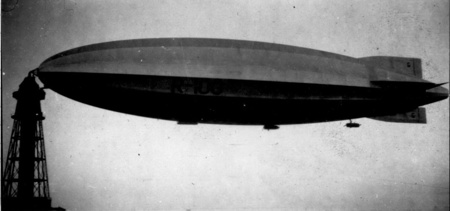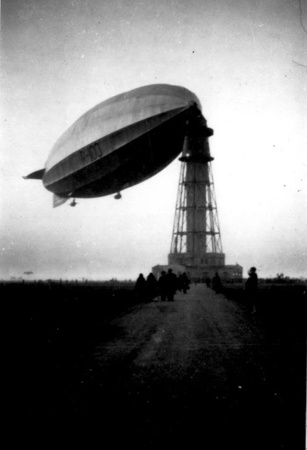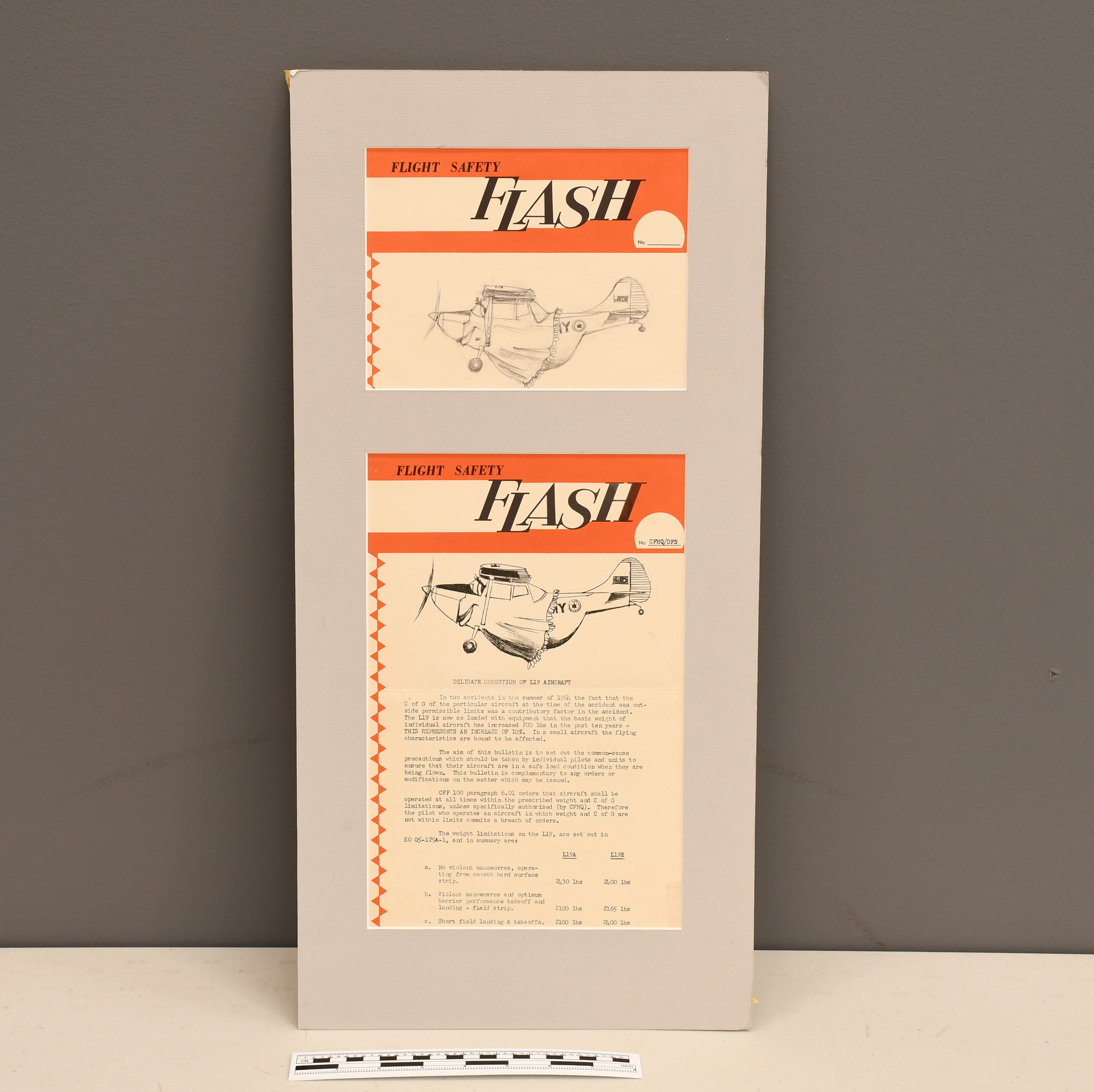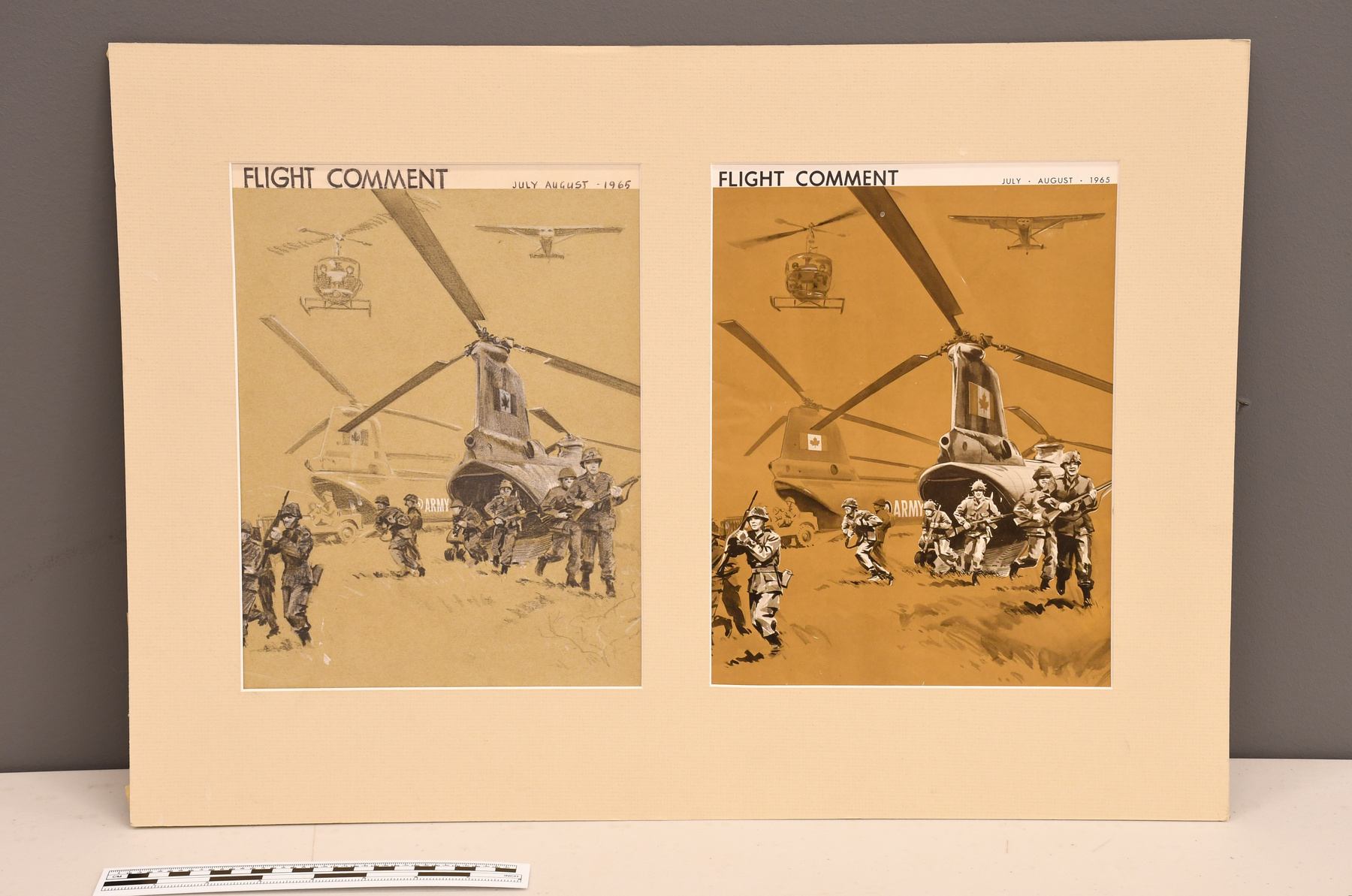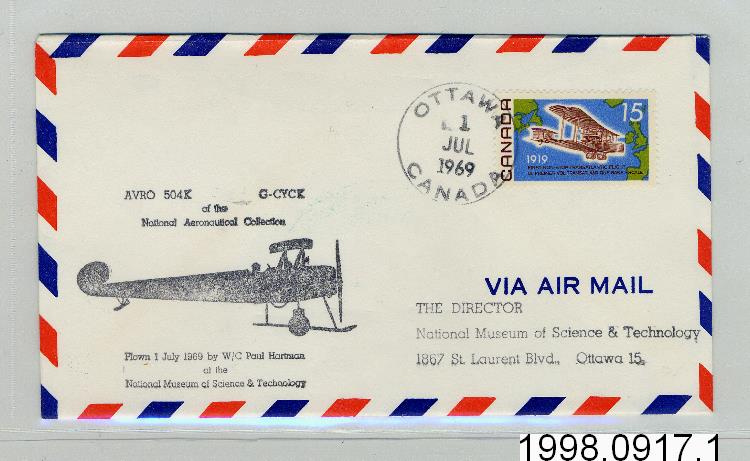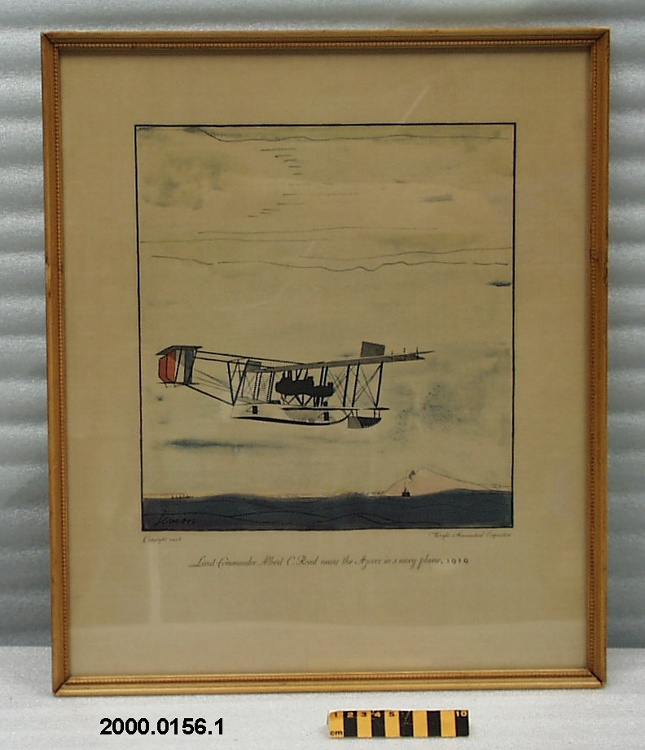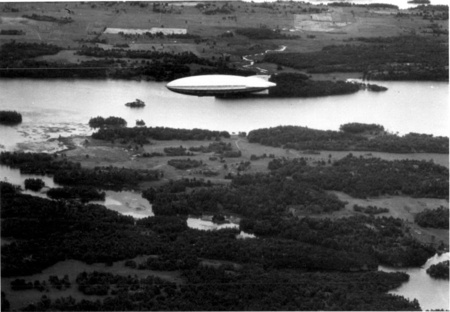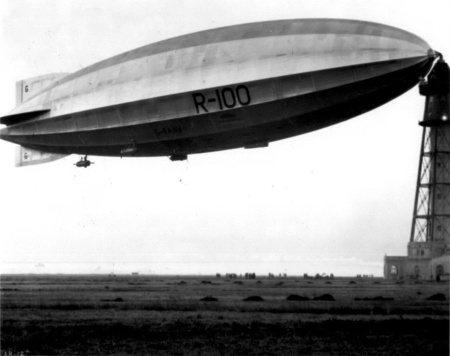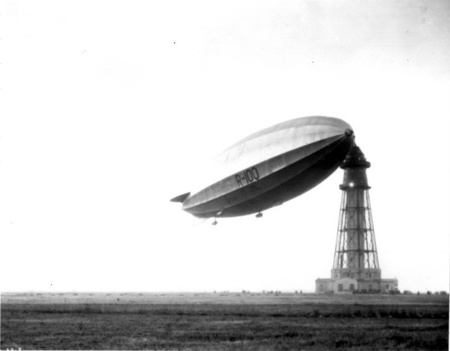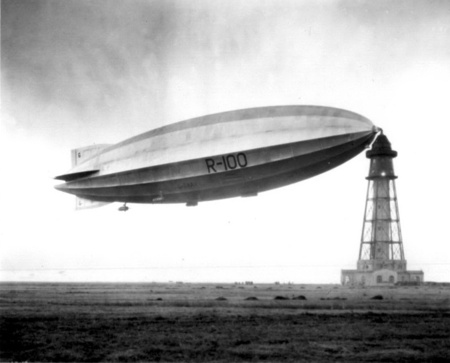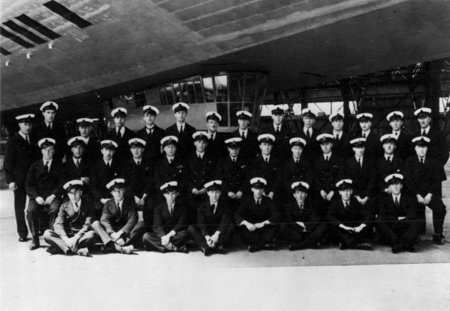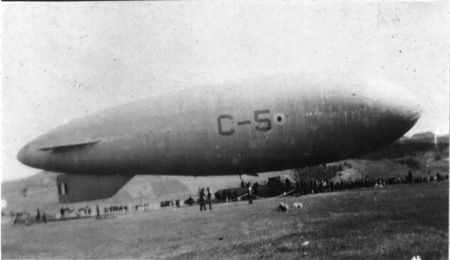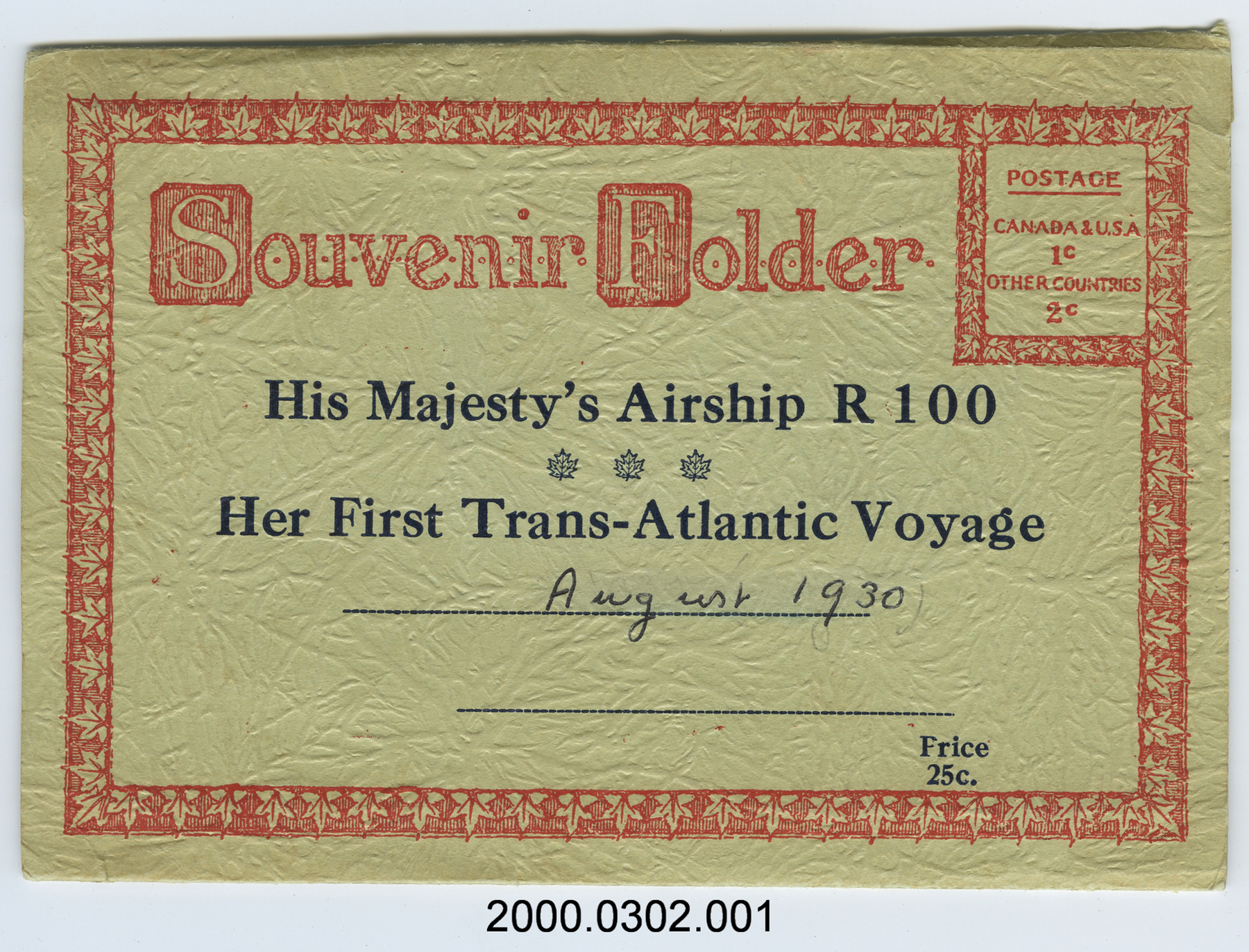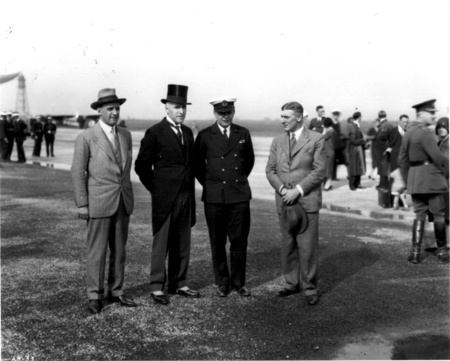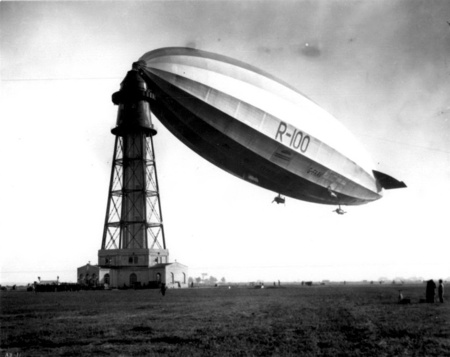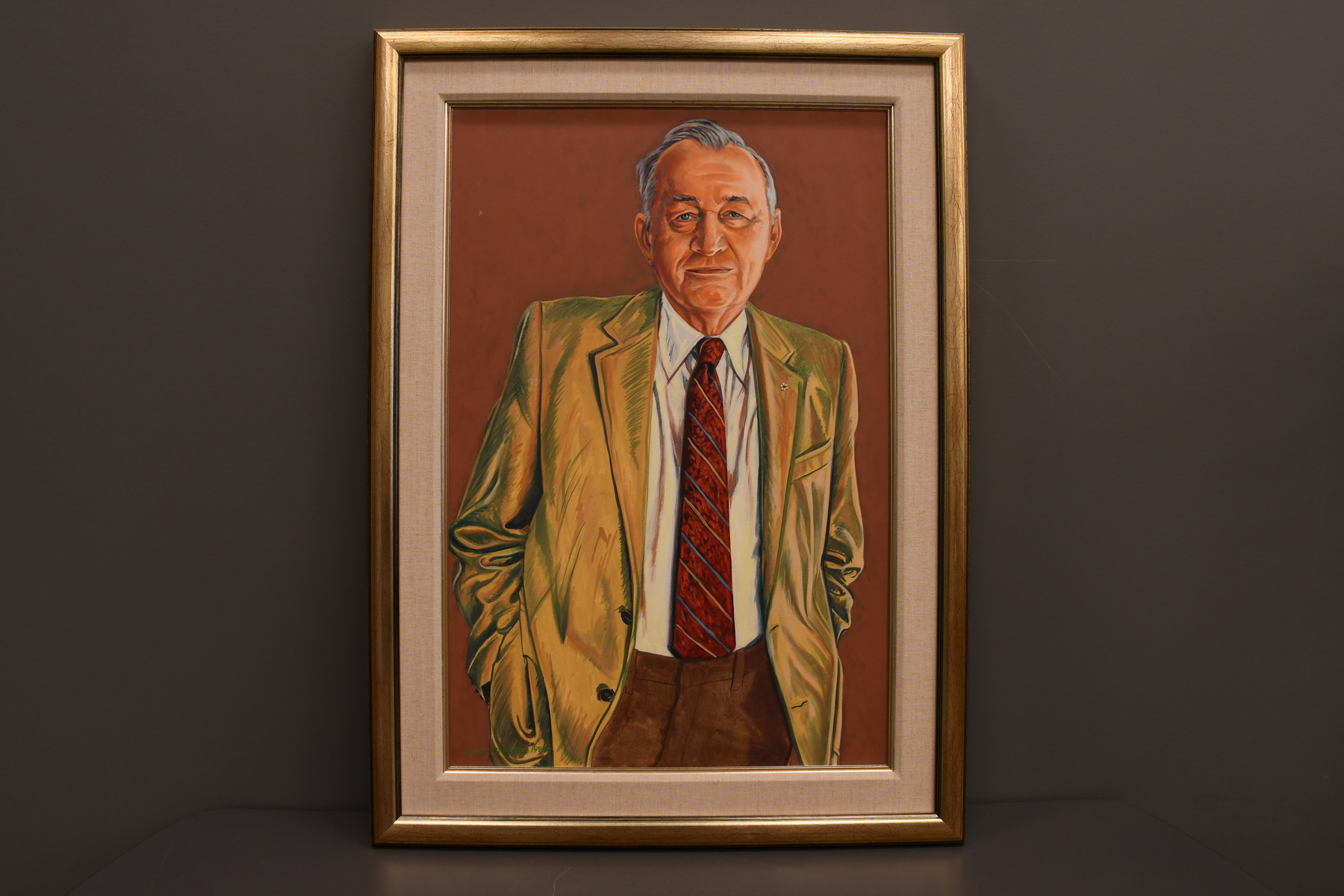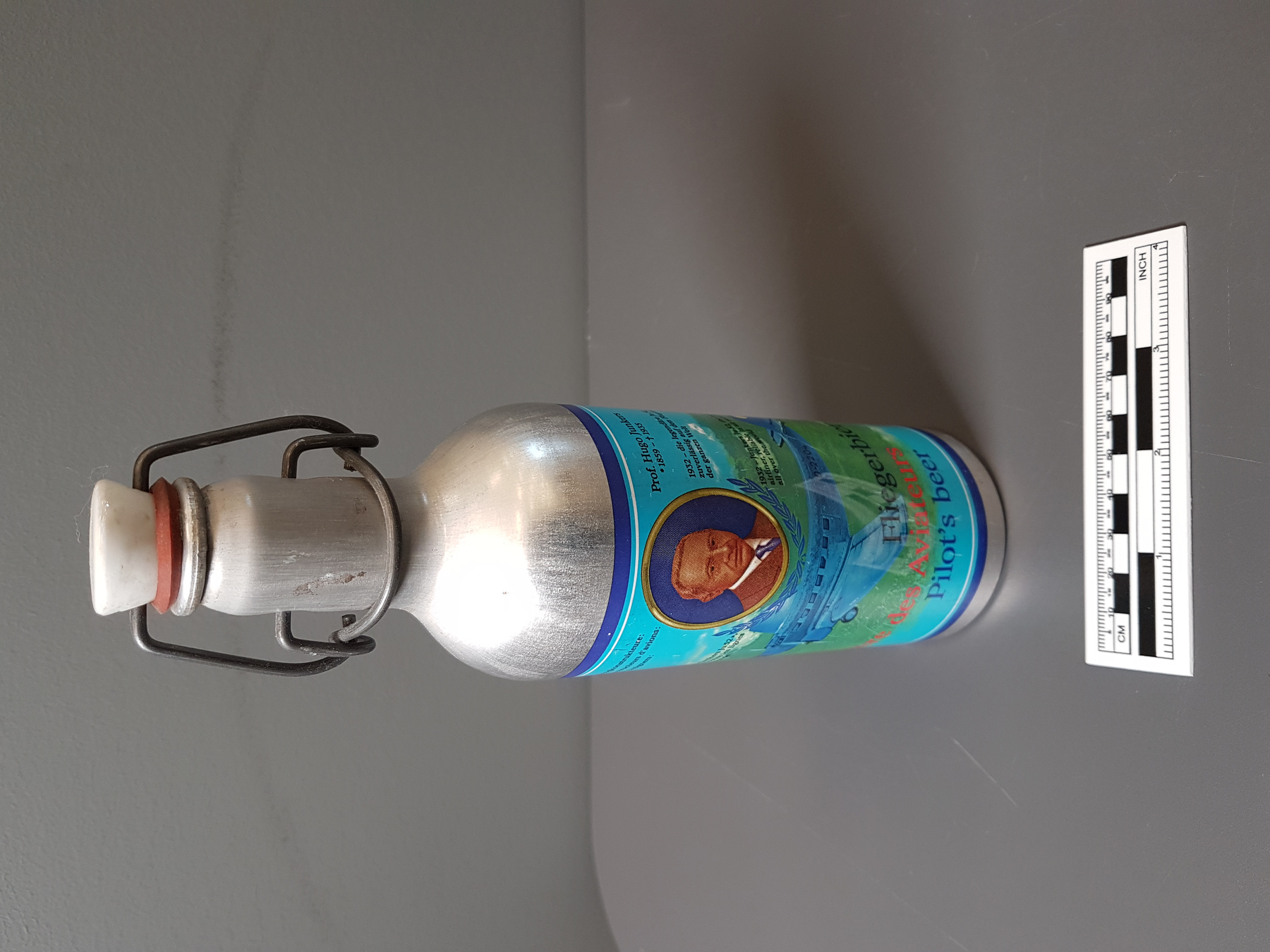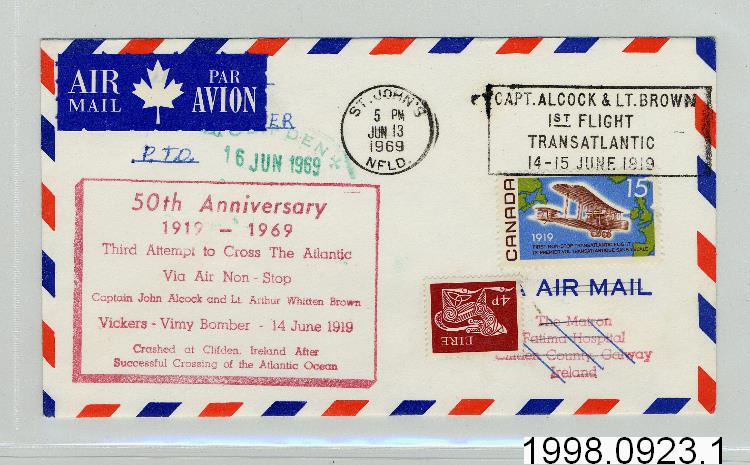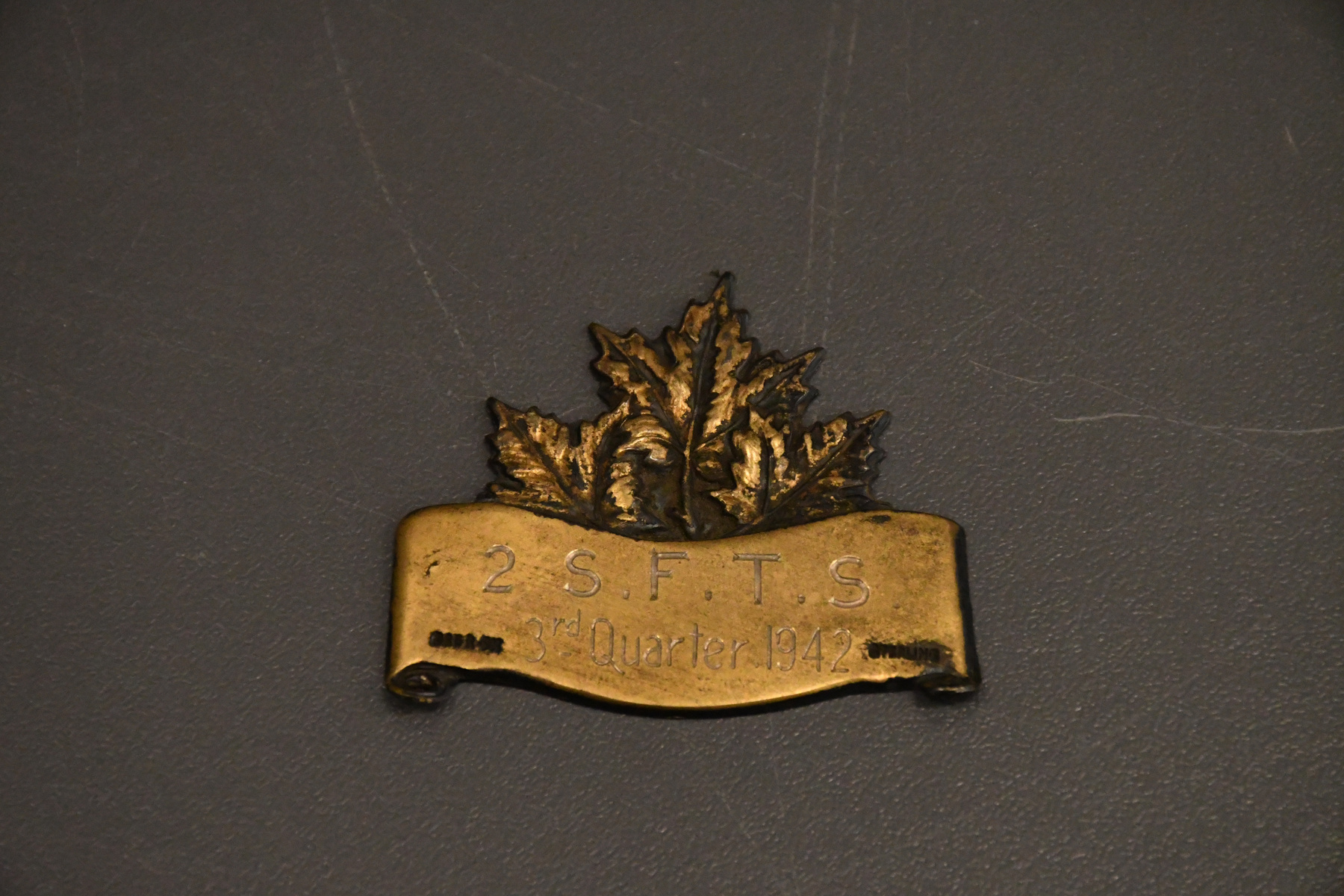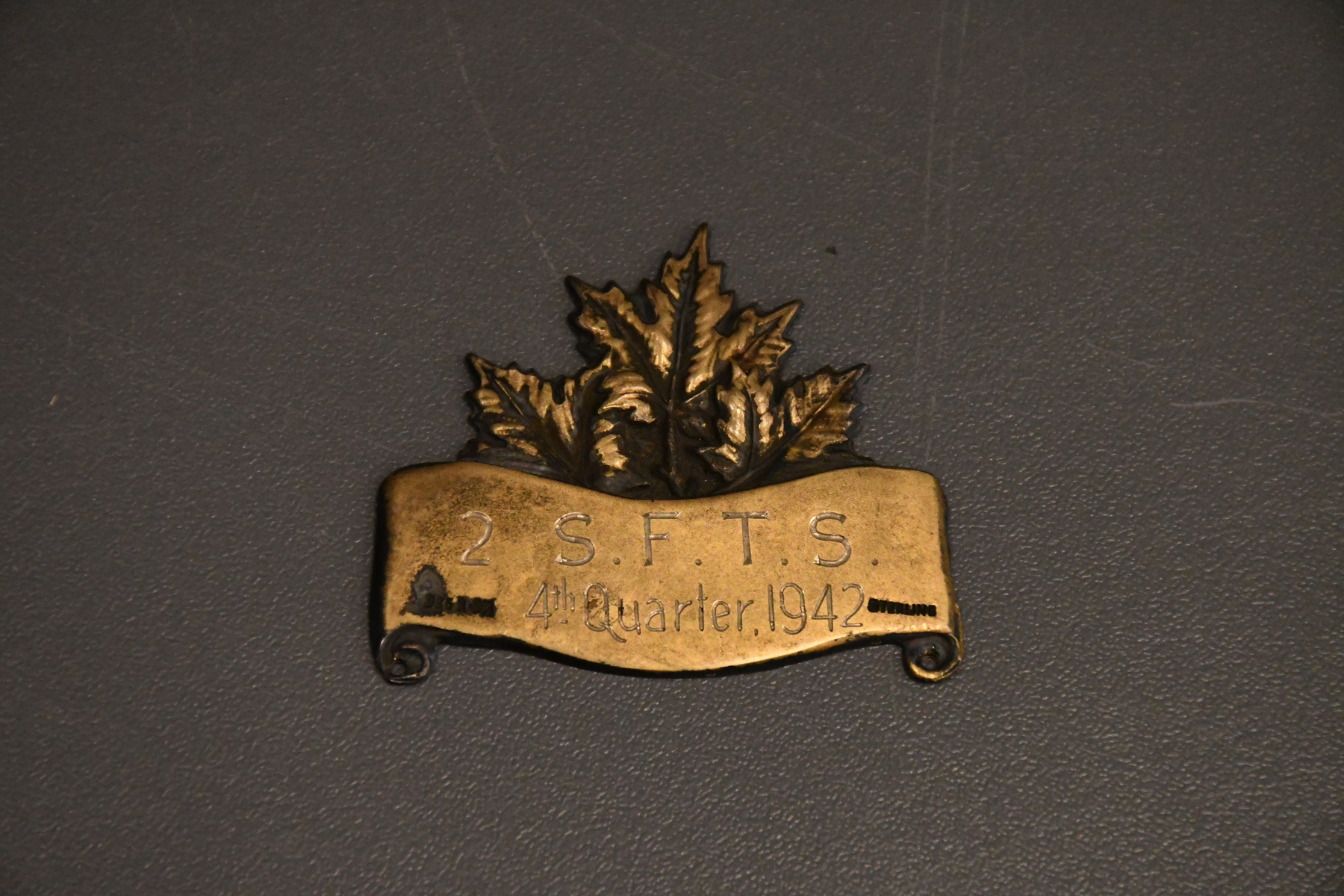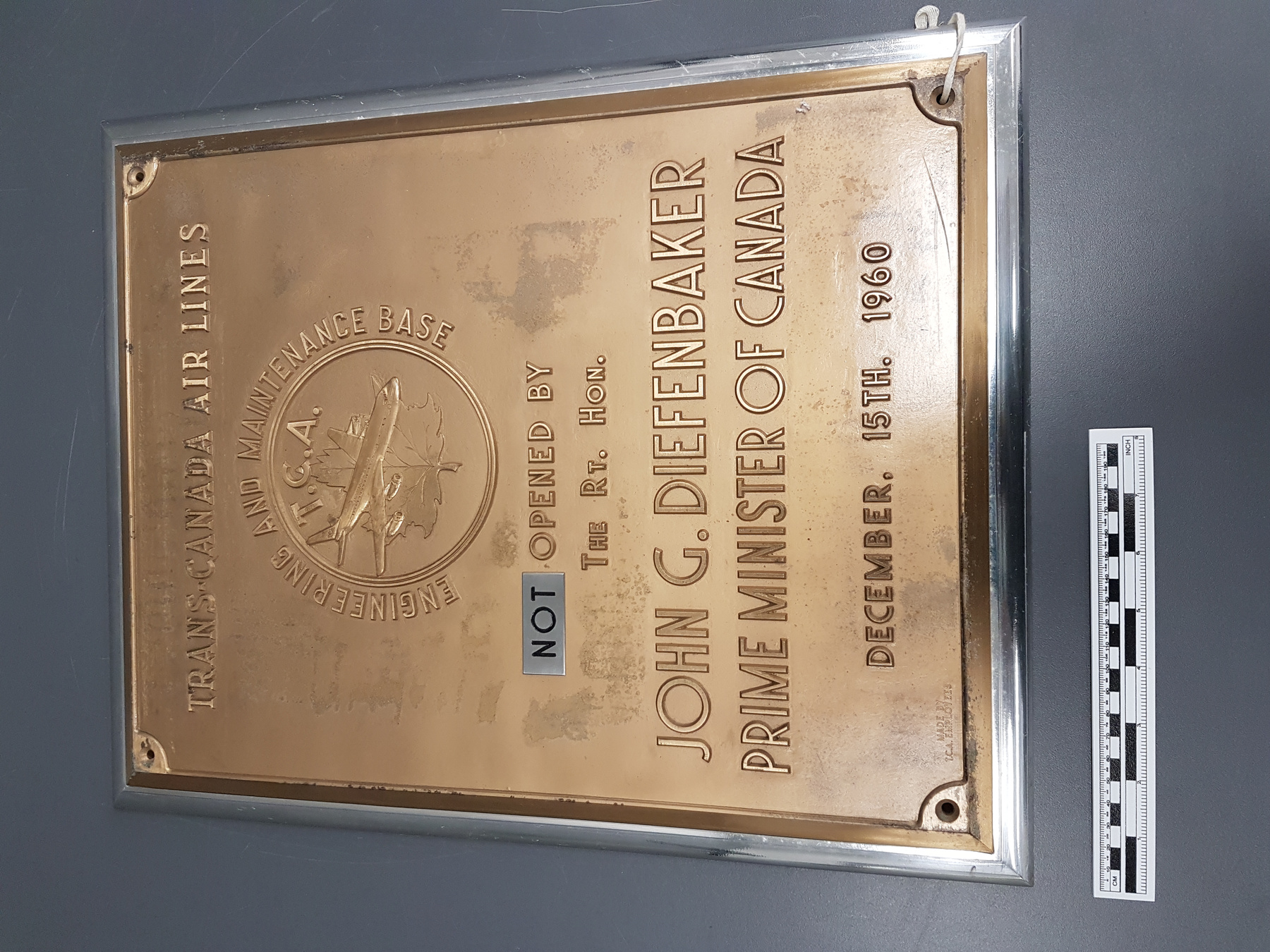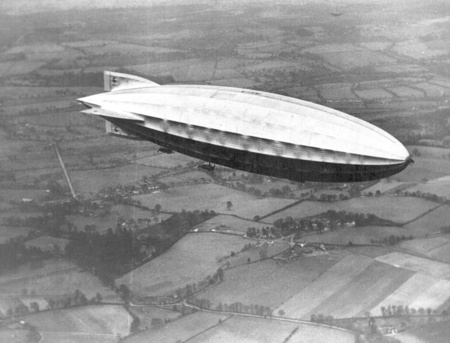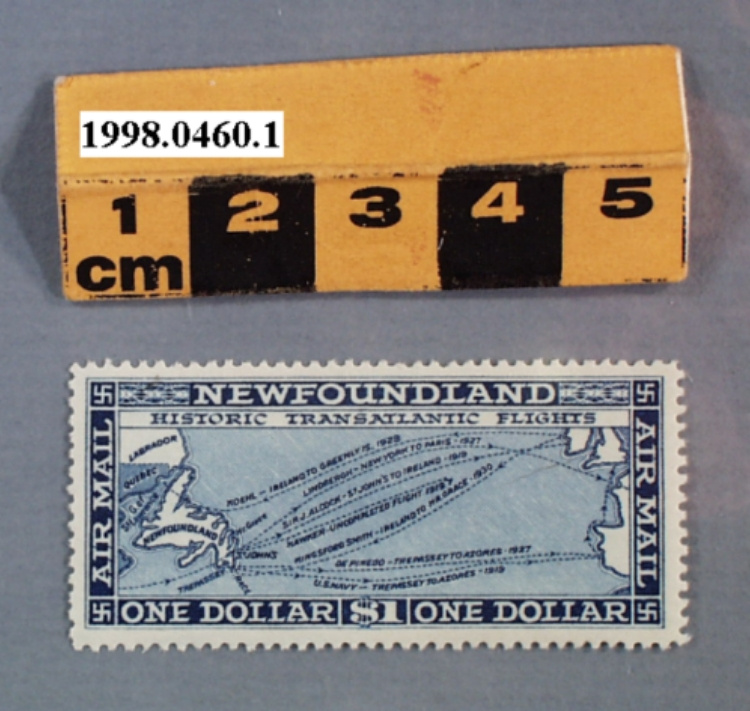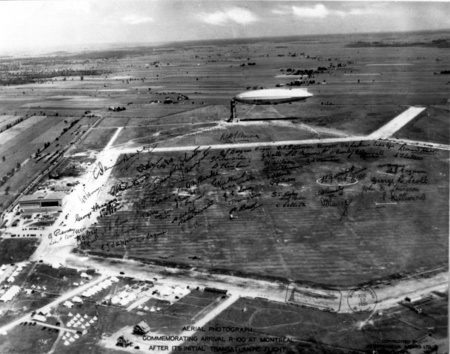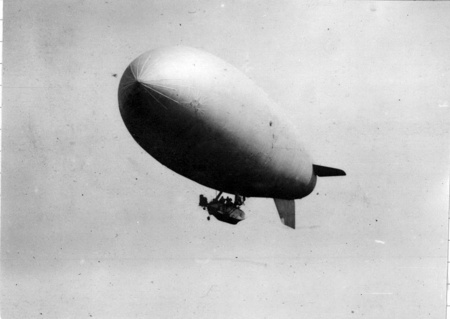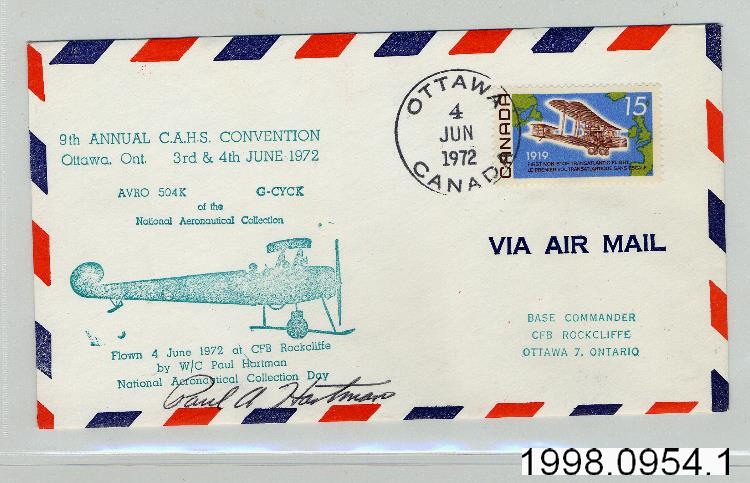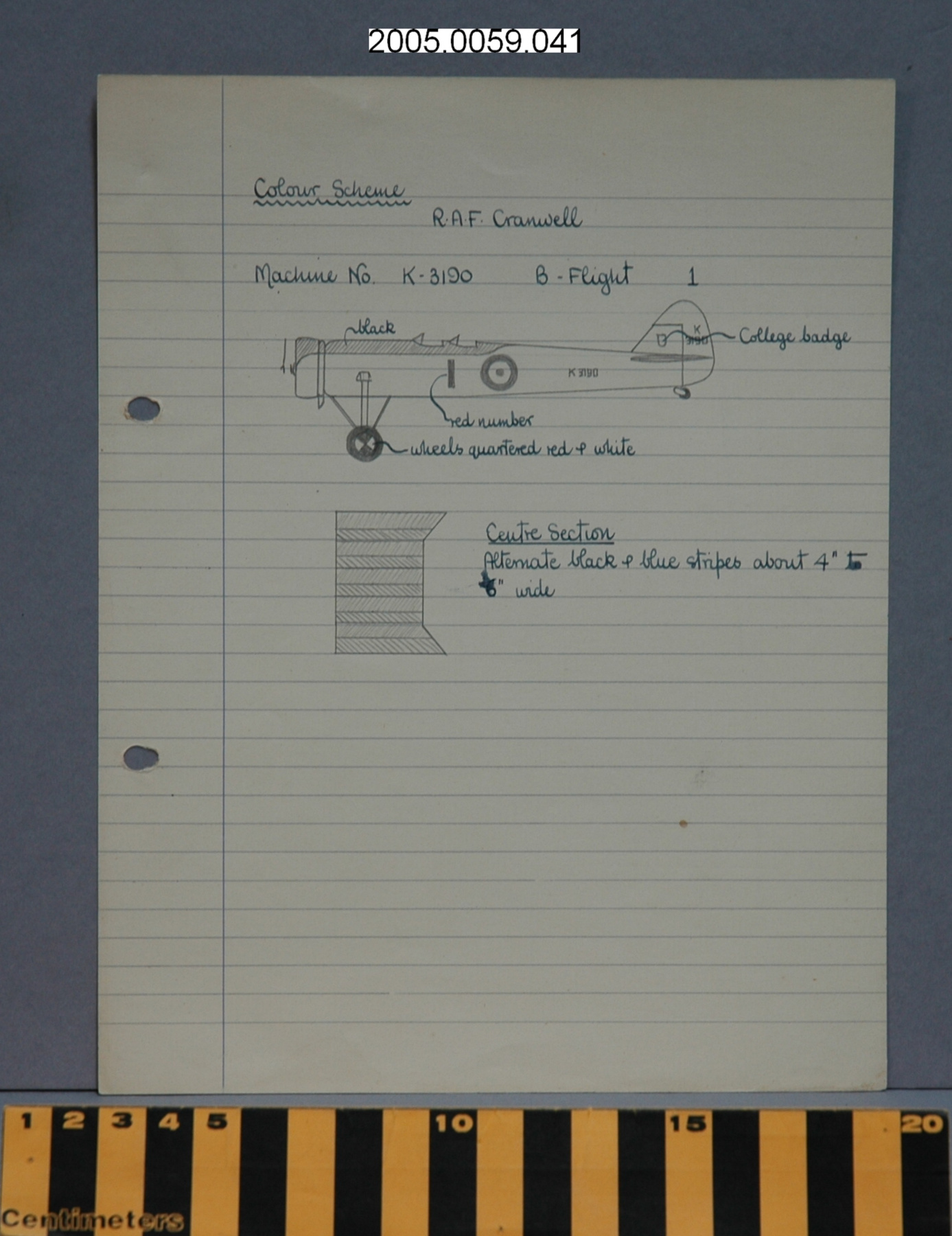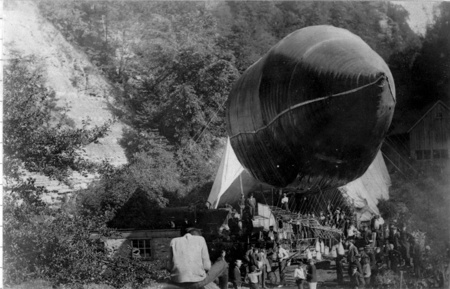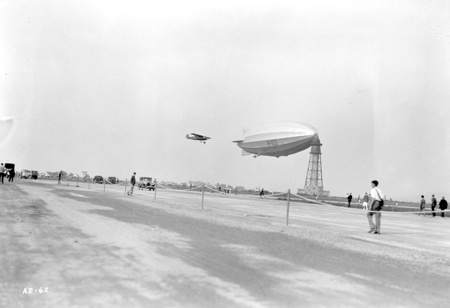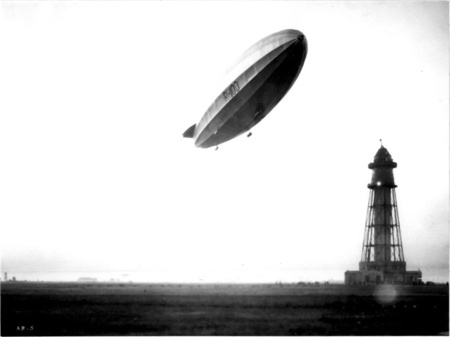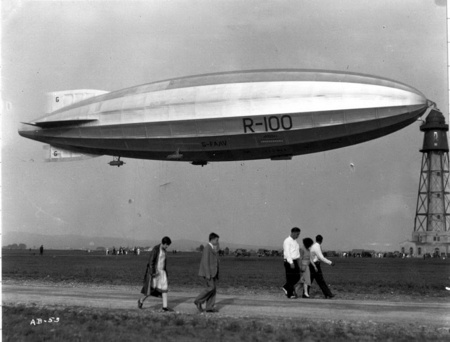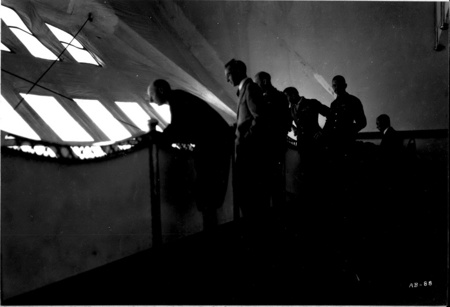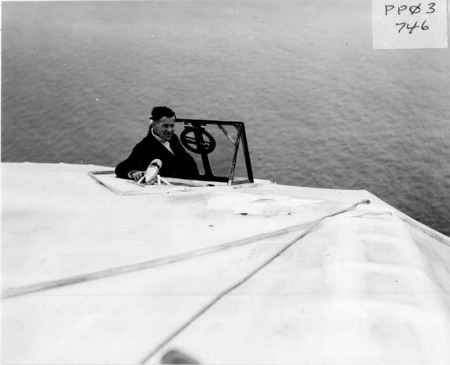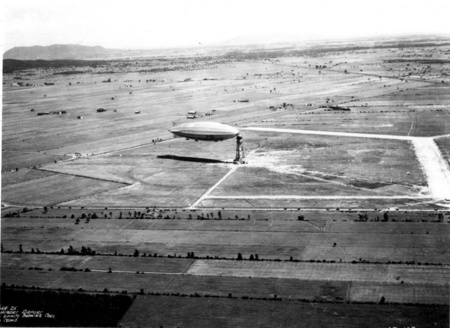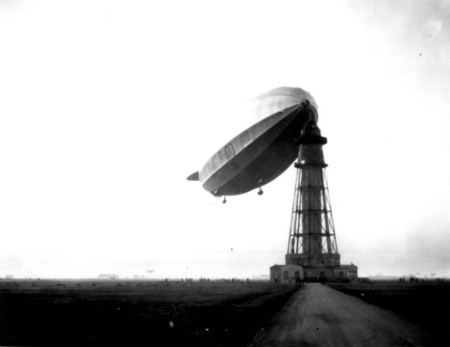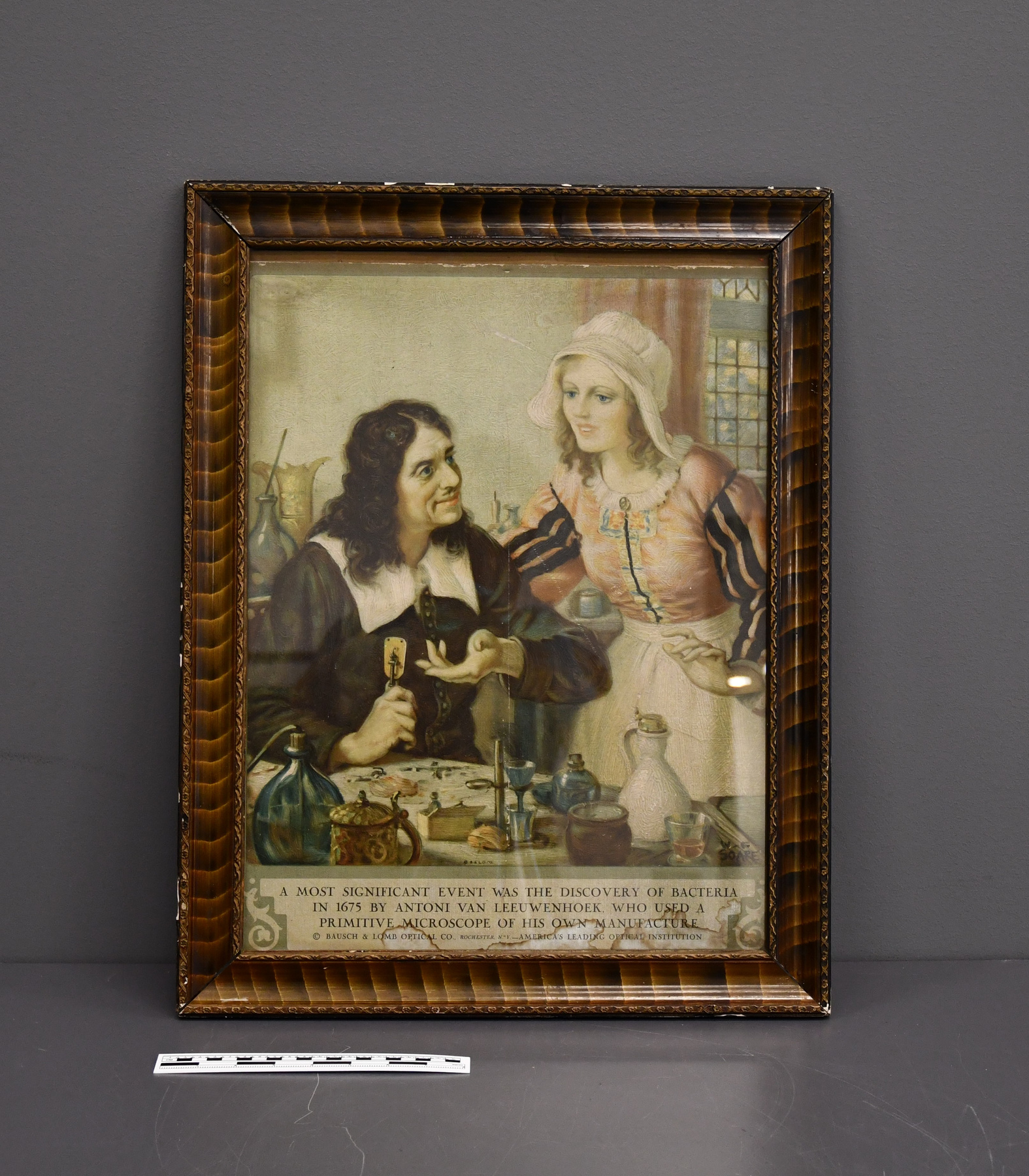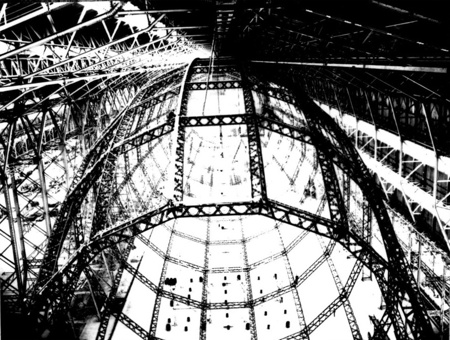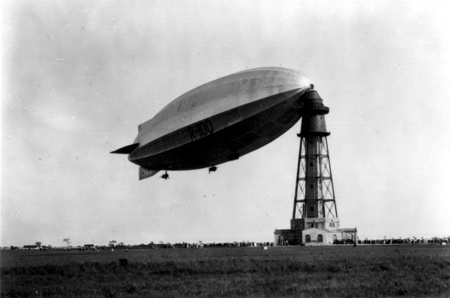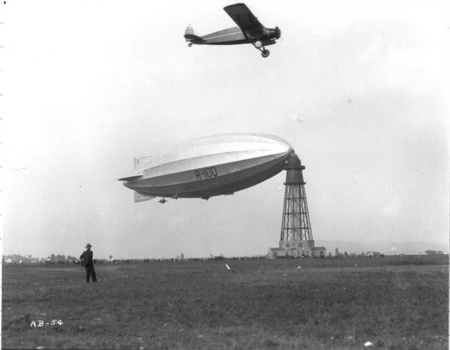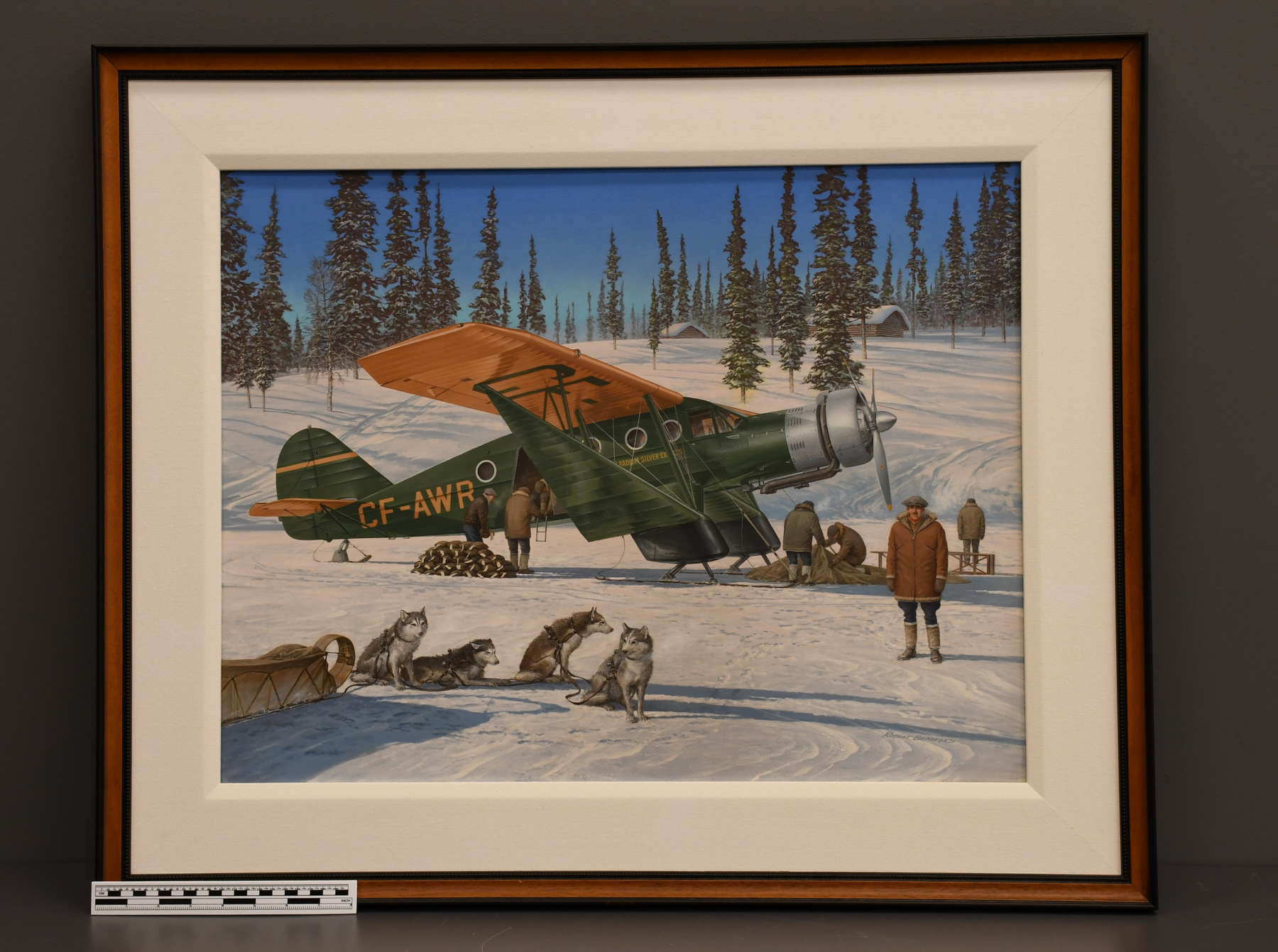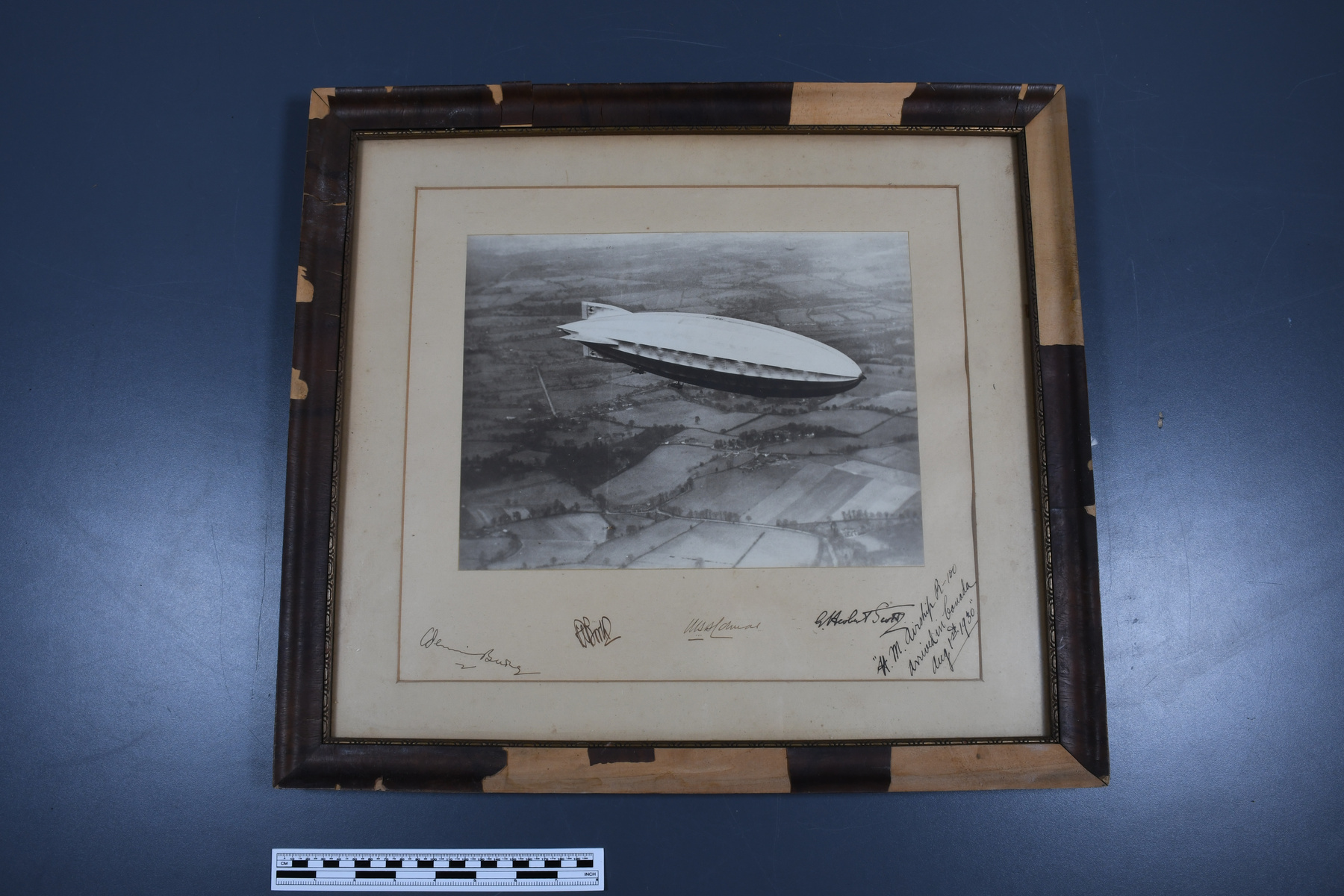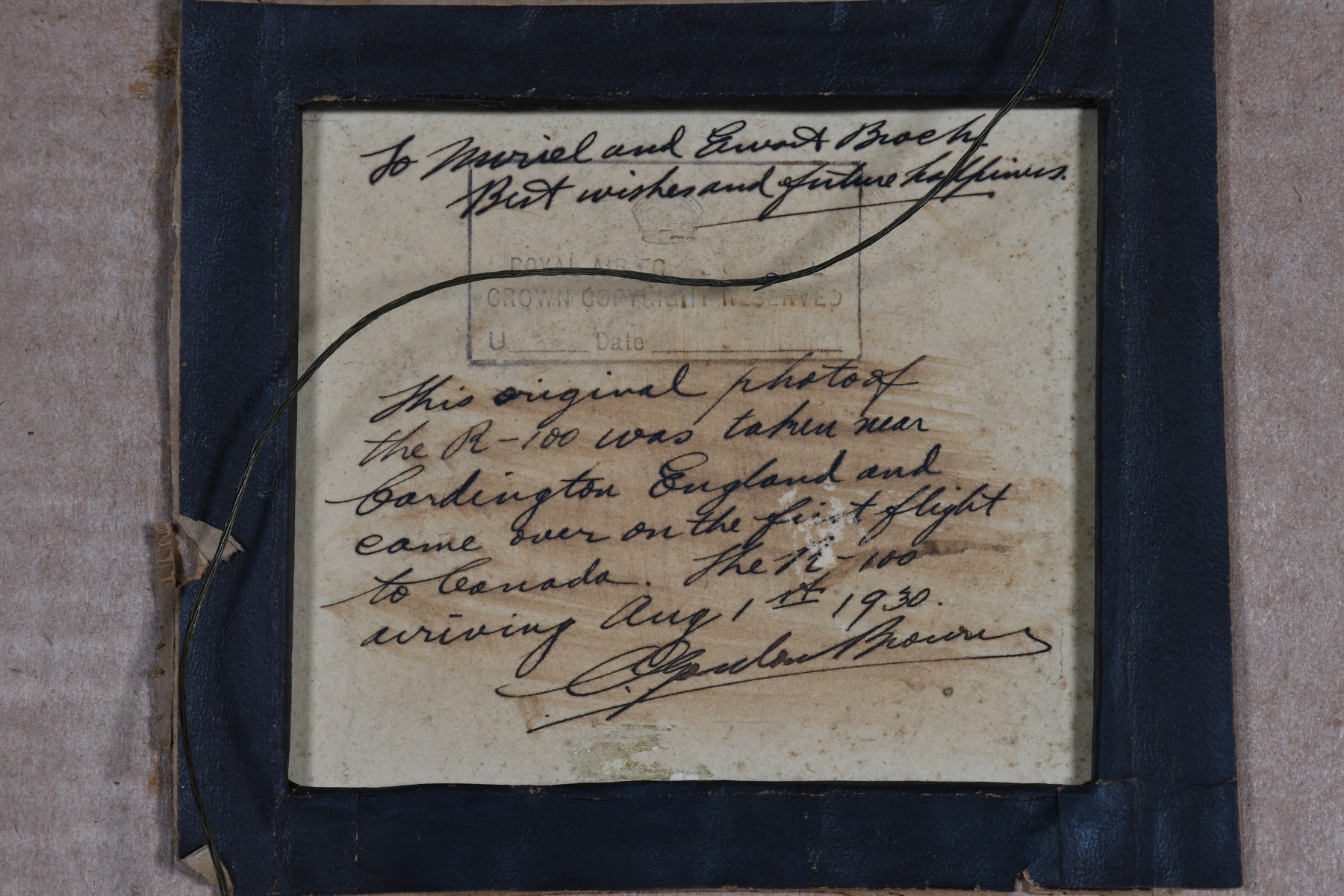Photograph
Use this image
Can I reuse this image without permission? Yes
Object images on the Ingenium Collection’s portal have the following Creative Commons license:
Copyright Ingenium / CC BY-NC-ND (Attribution-NonCommercial 4.0 International (CC BY-NC 4.0)
ATTRIBUTE THIS IMAGE
Ingenium,
2014.0423.001
Permalink:
Ingenium is releasing this image under the Creative Commons licensing framework, and encourages downloading and reuse for non-commercial purposes. Please acknowledge Ingenium and cite the artifact number.
DOWNLOAD IMAGEPURCHASE THIS IMAGE
This image is free for non-commercial use.
For commercial use, please consult our Reproduction Fees and contact us to purchase the image.
- OBJECT TYPE
- positive/print/b&w/framed
- DATE
- Unknown
- ARTIFACT NUMBER
- 2014.0423.001
- MANUFACTURER
- Unknown
- MODEL
- R-100
- LOCATION
- Unknown
More Information
General Information
- Serial #
- N/A
- Part Number
- 1
- Total Parts
- 1
- AKA
- N/A
- Patents
- N/A
- General Description
- Framed photograph commemorating the R-100 Airship. The photograph signed by the captain of the R-100 and the director of the company that built the airship. Photograph encadrée commémorant le dirigeable R-100. La photographe est signée par le capitaine du R-100 et le directeur de la compagnie qui a construit le dirigeable.
Dimensions
Note: These reflect the general size for storage and are not necessarily representative of the object's true dimensions.
- Length
- 46.0 cm
- Width
- 51.2 cm
- Height
- N/A
- Thickness
- N/A
- Weight
- N/A
- Diameter
- N/A
- Volume
- N/A
Lexicon
- Group
- Aviation
- Category
- Commemorative
- Sub-Category
- N/A
Manufacturer
- AKA
- Unknown
- Country
- Unknown
- State/Province
- Unknown
- City
- Unknown
Context
- Country
- Canada
- State/Province
- Unknown
- Period
- This original photograph came over to Canada on board of the R-100 first transatlantic flight by way of Great Britain in 1930. This photograph would of been used as memoribilia until it was donated to the corporation in 2014. Cette photographe originale est venue au Canada à bord du premier vol transatlantique du dirigeable R-100 venant de la Grande-Bretagne en 1930. Cette photographe aurait été utilisé en tant que souvenir jusqu'à temps qu'elle a été donné à la Société en 2014.
- Canada
-
His Majesty’s Airship R-100 was a British airship built by the Airship Guarantee Company as part of a government program, the Imperial Airship Scheme, to develop airships for passenger and mail transport between Britain and other countries in the British Empire, including Canada, during the 1920s. The R-100 participated in a transatlantic flight between England and Canada, beginning on July 29, 1930 and arriving at the Saint Hubert Airport on August 1, 1930. The R-100 travelled to Ottawa, Toronto and Niagara Falls on a 24-hour passenger flight while in Canada, before departing on August 13, 1930 and arriving back to England on August 16, 1930. The R-100’s trip to Canada garnered significant public interest as it represented the potential for this type of passenger air travel between Canada and England, however Britain’s Imperial Airship Scheme ended when airship R-101 crashed in France on its first flight to India. This signed photograph of the R-100 in flight over Cardington, England was brought to Canada on the 1930 transatlantic flight and includes signatures from one of the R-100 captains, Major George H. Scott, and Sir Charles Dennistoun Burney, the director of the airship’s manufacturer, Airship Guarantee Company Limited. It was then gifted to Muriel and Ernest Brock to commemorate the R-100’s voyage to Canada. Le R-100 était un dirigeable britannique construit par la compagnie Airship Guarantee faisant partie d’un programme de gouvernement intitulé le Imperial Airship Scheme, pour développer des dirigeables pour des passagers et le courrier entre la Grande-Bretagne et autres pays de l’Empire britannique, incluant le Canada, lors des années 1920’s. Le R-100 a participé dans un vol transatlantique entre l’Angleterre et le Canada, en commençant le 29 juillet 1930 et en arrivant à l’aéroport de Saint-Hubert le 1er août 1930. Le R-100 a voyagé à Ottawa, Toronto et Niagara Falls lors d’un voyage de 24 heures au Canada avant de quitter le 13 août 1930 et d’arriver en Angleterre le 16 août. Ce voyage du R-100 au Canada a attiré beaucoup d’intérêt du public étant donné qu’il représentait le potentiel de ce type de voyage passager entre le Canada et l’Angleterre. Cependant, le programme Britannique Imperial Airship Scheme a terminé lorsque le R-101 s’est écrasé lors de son premier vol entre la France en direction pour l’Inde. Cette photographe du vol du R-100 au-dessus de la ville de Cardington en Angleterre a été apporté au Canada lors du voyage transatlantique au Canada en 1930 et inclue des signatures de l’un des capitaines, M. George H. Scott et Sir Charles Dennistoun Burney, le directeur de la compagnie qui a construit le dirigeable, la compagnie Airship Guarantee. La photographe a été donné en tant que cadeau à Muriel et Ernest Brock pour commémorer le voyage du R-100 au Canada. - Function
-
To commemorate the R-100 airship’s arrival to Canada on August 1, 1930, after a transatlantic voyage from England. Pour commémorer l'arrivée du dirigeable R-100 au Canada le 1er août 1930, après son voyage transatlantique venant de l'Angleterre. - Technical
-
The R-100 was a rigid airship, a type of lighter-than-air aircraft. It was 219 metres long and 41 metres in diameter with a body shape of an elongated oval with a pointed nose and finned tail. Lift was provided by a series of gas cells filled with hydrogen and contained in an internal frame and covered in doped linen fabric. The R-100 used fewer internal supports, known as longitudinal girders, than other airships as wind tunnel tests had shown that a 16-sided transverse section had approximately the same drag as a circular one thus reducing stress calculations. This framed photograph showcases the design innovations of the R-100, including the unique 16-sided shape and features signatures from various people associated with the R-100. Le R-100 était un dirigeable rigide, un type d'aéronef plus léger que l'air. Il était environ 219 mètres en longueur et 41 mètres en diamètre avec une forme d'ovale allongée avec un nez pointu et une queue à ailette. L'envol est permit pas une série de cellules de gas remplis avec de l'hydrogène dans un espace interne qui est couvert par solution à filer. Le R-100 utilisait moins de support internes (connus comme étant des poutres longitudinaux), comparés à autres dirigeables étant donné que les essais en soufflerie ont démontrés qu'une section transversale de 16 côtés avait approximativement la même vitesse de trainée qu'une section circulaire, réduisant cependant les calculs. Cette photographe encadrée démontre les motifs innovants du R-100, incluant la forme unique à 16 côtés et met en vedette les signatures des différentes figures associées au R-100. - Area Notes
-
Unknown
Details
- Markings
- Handwritten in black at the center of the back of the painting: " THIS ORIGINAL PHOTO OF /. THE R-100 WAS TAKEN NEAR /. CARDINGTON ENGLAND AND /. CAME OVER ON THE FIRST FLIGHT /. TO CANADA. THE R-100 /. ARRIVING AUG 1ST 1930. "
- Missing
- Appears complete. L'objet semble complet.
- Finish
- Rectangular wooden frame with a dark brown paint coating on the outside edge of the frame. Some sections of the edge of the frame expose the wood due to layers of paint being chipped off. The front of the frame has a protective transparent glass cover. The black and white photograph is fixed onto a cream coloured paper background. The back of the frame has a light brown cardboard protective covering which is fixed to the edge of the frame in part by metal staples. The center of the back of the frame has a cream coloured paper piece with some black handwriting. The back of the frame also has a black metal hanging wire which is attached horizontaly. Cadre rectangulaire en bois avec une couche de peinture brun foncé sur le rebord du cadre. Certaines sections du rebord du cadre exposent le bois en raison de certaines couches de peinture qui ont été écaillé. Le devant du cadre a une couverture protectrice de verre transparent. La photographe en noir et blanc est affixée sur un arrière-plan en papier de couleur crème. Le derrière du cadre a une couverture protectrice en carton brun pâle qui est attaché au rebord du cadre en raison d'épingles en métal. Le centre du derrière du cadre a un papier en couleur de crème avec de l'écriture à main en noir. Le derrière du cadre a aussi un fil noir en métal qui est attaché horizontalement.
- Decoration
- N/A
CITE THIS OBJECT
If you choose to share our information about this collection object, please cite:
Unknown Manufacturer, Photograph, Unknown Date, Artifact no. 2014.0423, Ingenium – Canada’s Museums of Science and Innovation, http://collection.ingeniumcanada.org/en/id/2014.0423.001/
FEEDBACK
Submit a question or comment about this artifact.
More Like This
